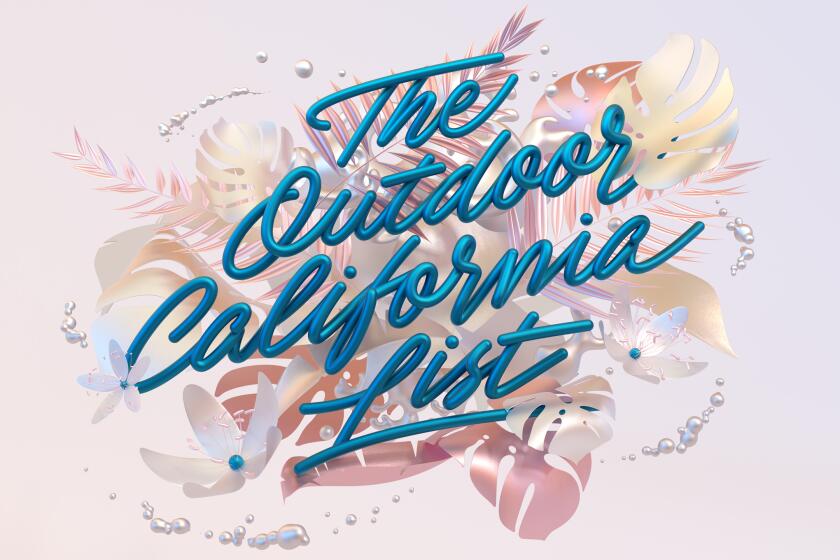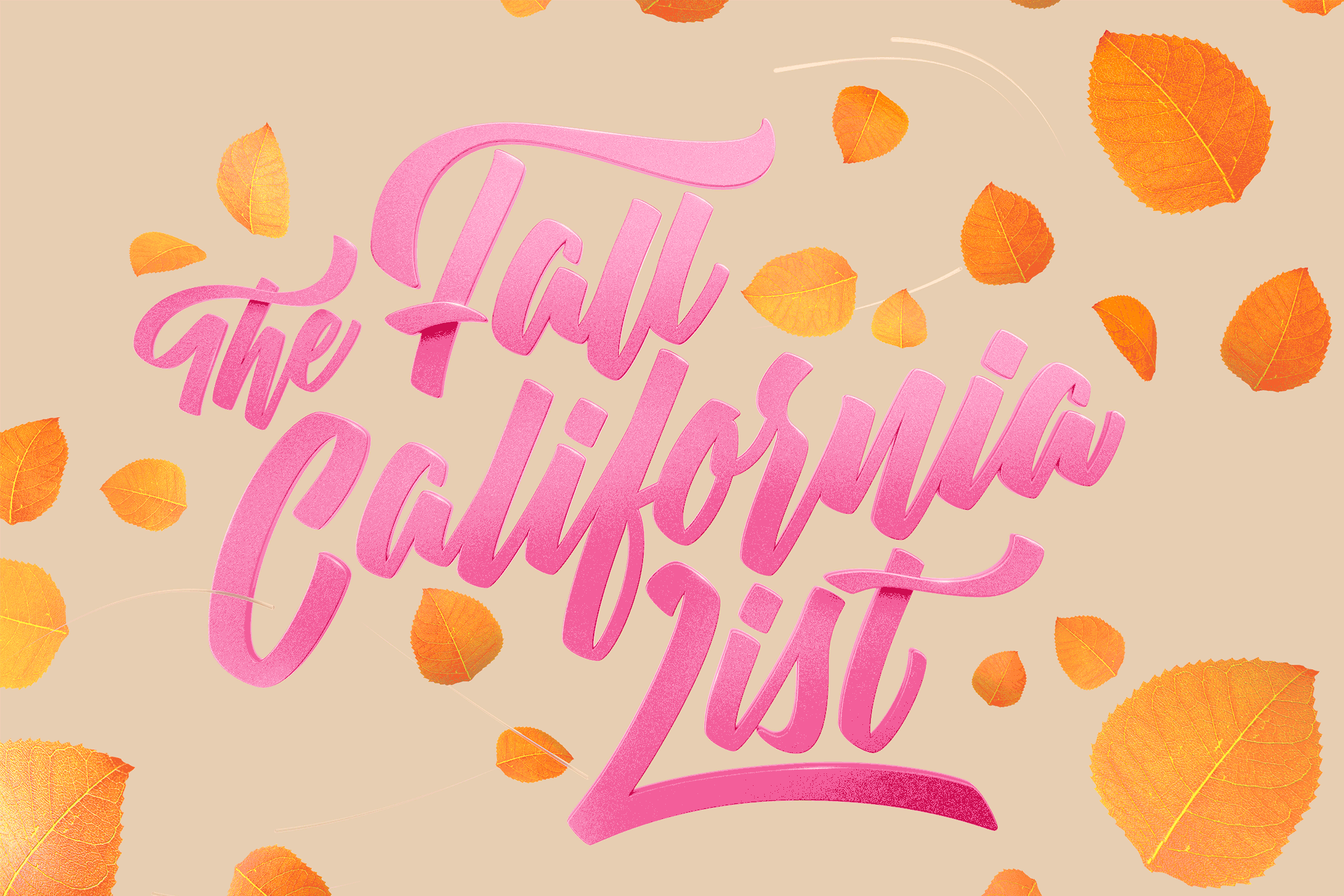(Ana Gómez Bernaus / For The Times)
The 40 best California experiences: Winter edition
The rest of the world might not understand our winters, but Southern Californians know.
We recognize that great things happen in these months ahead. It’s not just holiday lights and snow in the mountains but whale migrations, elephant seal love-ins, butterfly conventions and “Nutcracker” productions, pandemic permitting. Also excellent surf. Easier desert hikes. Livelier stages, concert halls and museums. A parade in Pasadena. A fresh rewriting of every farm-to-table menu.
I could go on. In fact, I am going on. Here, fellow travelers, are my Top 40 winter adventures statewide. This collection comes in the wake of my earlier summer and fall Top 40 lists, and it’s tailored to allow for the increased indoor access we’ve been seeing lately.
Still, as we’ve learned during the last 21 months of battle against COVID-19, things change. Before you head to any of these places, check websites (and maybe make a phone call or two) to be sure what each destination’s latest ground rules are for vaccination, masking and occupancy.
If I’ve missed a great place for winter, please tell me where to go @mrcsreynolds (Twitter or Instagram), [email protected] or tell us here. Sometimes the conversation is the best part of these projects.
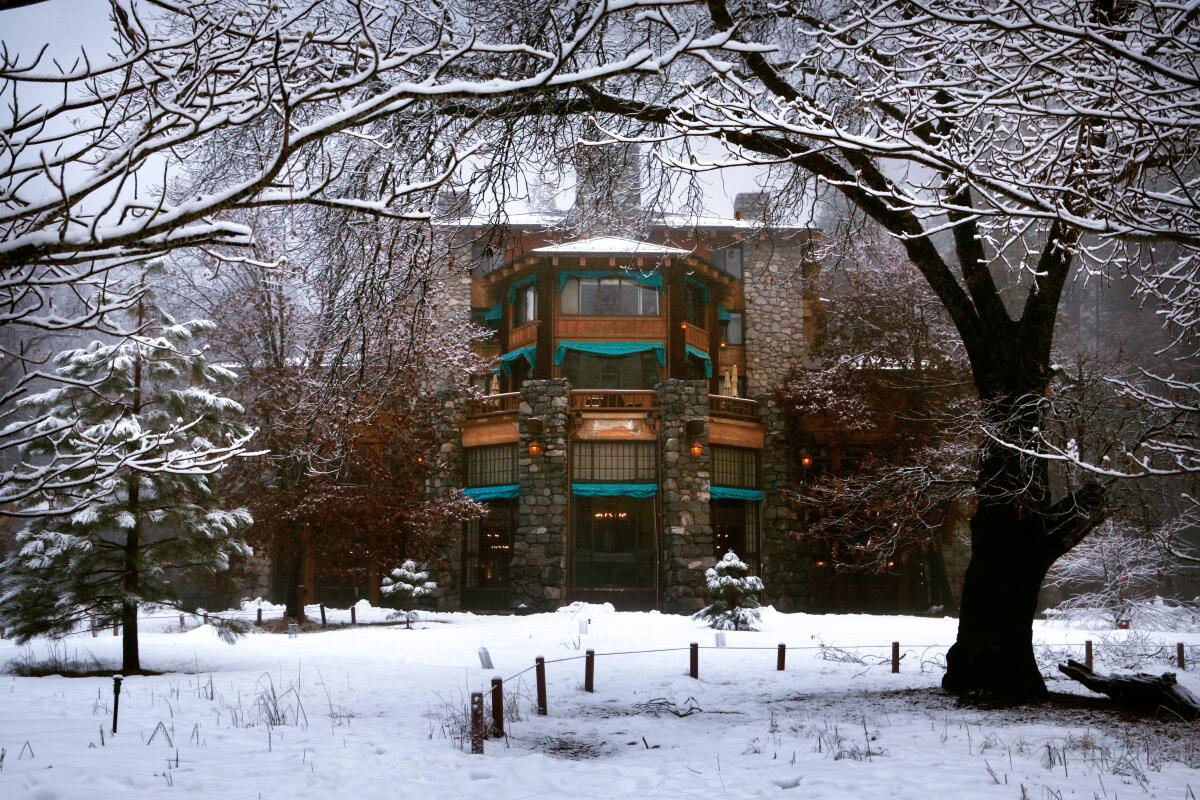
Ahwahnee Hotel, Yosemite National Park
If you get to the Ahwahnee this winter, be ready for more adventure and less luxury than usual. Despite the prices, the Ahwahnee’s service has often struggled to keep up with its rugged good looks, and many pandemic precautions are in place.
The dining won’t have table service (it’s all buffet for breakfast and dinner, takeout for lunch). There won’t be room service or daily maid service, and no lavish Bracebridge Dinner this year. (Will nightly rates still be north of $450? Yes.)
But it’s such a great building. And Yosemite Valley under snow is priceless. And just about every winter since 1928, there has been ice skating on a seasonal rink in the valley’s Curry Village.
Pro tip: If you care more about amenities than historic grandeur (and you’re splurging), consider the intimate Chateau du Sureau in Oakhurst (10 rooms) or the large Tenaya Lodge in Fish Camp (352 rooms). They’re along Highway 41, a 60- to 90-minute drive south of Yosemite Valley.
Also consider the firefall, which you may wish to chase or avoid, depending on whether you own a tripod. In February each year if weather is clear, the valley’s Horsetail Fall is bathed in a golden backlight that makes it glow like a flaming waterfall. Photographers come from all over, prompting special rules. (2022’s most likely dates are Feb. 13-25.)
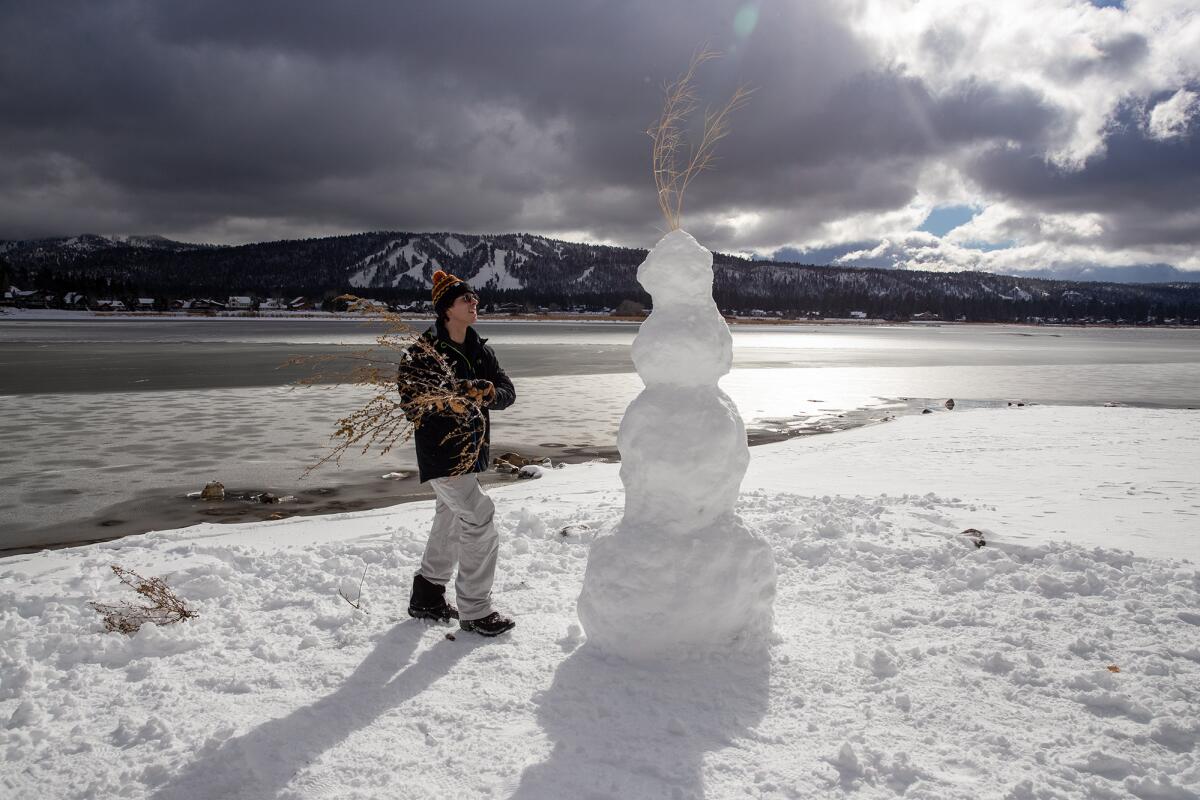
Big Bear
Young boarders may head instead for Snow Summit’s sibling two miles away, Bear Mountain ski area (12 chairlifts, 24 trails, including many learner slopes, and 198 skiable acres, including popular terrain parks). Together the two mountains are known as Big Bear Mountain Resort, and lift tickets are interchangeable. The resort has set its ski season opening days: Thursday (passholders) and Friday (everyone else).
If you’re going to attempt to ski and surf in one day, you might start or end at Snow Valley (12 lifts, 29 trails, 240 skiable acres) in nearby Running Springs, 10 miles closer to the coast than Snow Summit and Bear Mountain. (For more on California winter resorts, including Mountain High and Mt. Baldy in the San Gabriel Mountains, visit onthesnow.com.)
Don’t forget the rest of Greater Big Bear. Big Bear Lake is the neighborhood’s biggest body of water (with lots of fishing and boating in summer) neighbored by the city of Big Bear Lake and unincorporated area of Big Bear City. A variety of lodgings awaits, from the mountain modernity of Midnight Moon Cabins to your basic Motel 6.
Pro tip: Need a mountain breakfast? Grizzly Manor (7 a.m. to 2 p.m. daily) in Big Bear Lake is known for big portions and irreverent attitude. Or, to quote the website, “bland food and salty staff.”
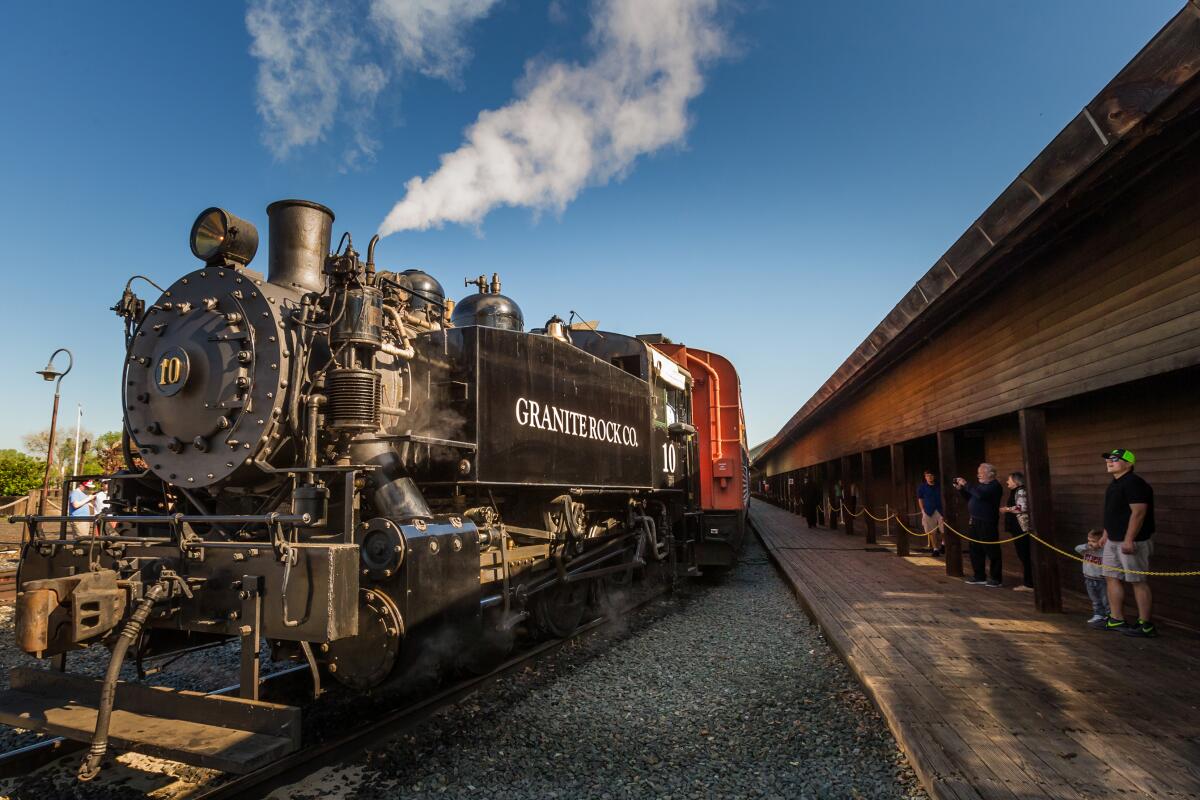
Old Sacramento
The rail museum includes exhibits on the hard work and racism that Chinese railroad workers endured. There’s also a virtual exploration of the luxury private railcar used by pioneering photographers Lucius Beebe and Charles Clegg. Adult admission is $12. The museum’s annual Polar Express program for families is scheduled to run through Dec. 19.
Pro tip: The 4.2-mile Sacramento River Bike Trail runs right past the museum, and Amtrak’s Sacramento Valley Station is a five-minute walk away.
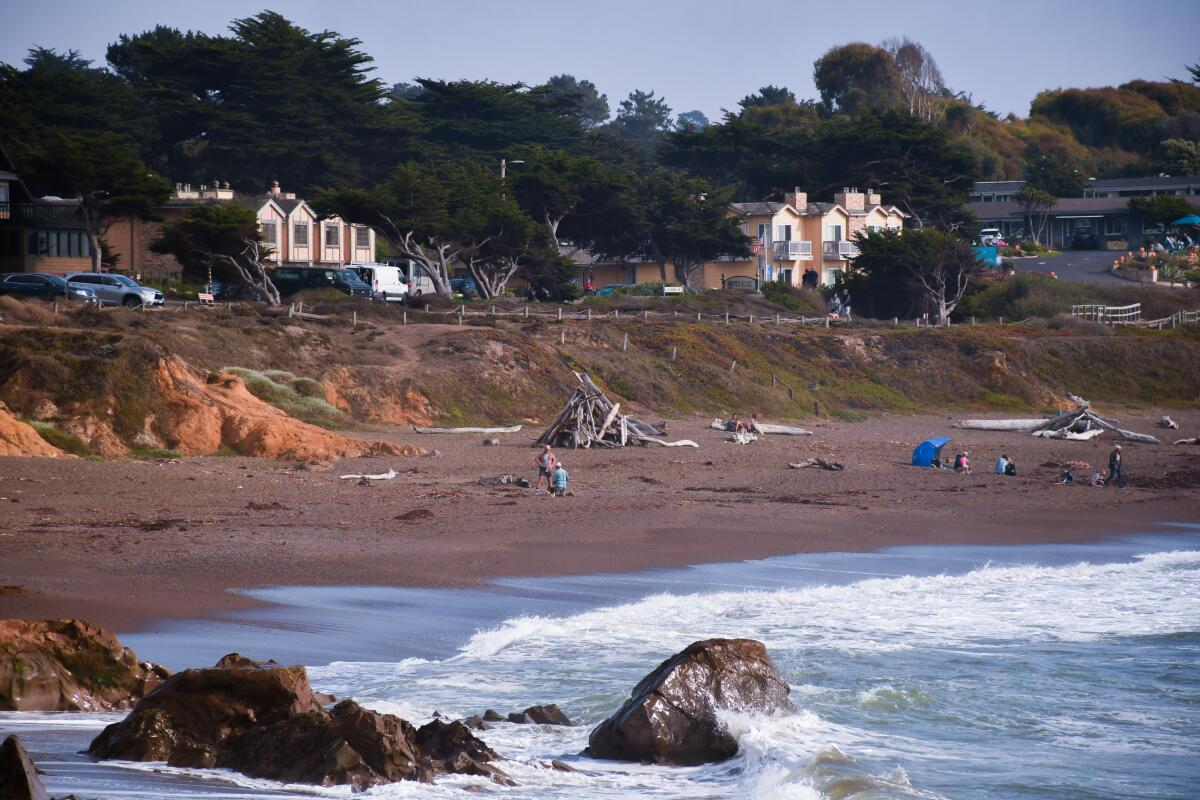
Moonstone Beach
The city’s east and west villages sit a bit inland, and Main Street includes art galleries and boutiques but no chain stores.
Stroll the mile-long Moonstone Beach Boardwalk. Hike on the Fiscalini Ranch Preserve‘s Bluff Trail. Sample the eclectic menu at Robin’s Restaurant (a mainstay for more than 25 years), slurp chowder at the Sea Chest Oyster Bar or dig into olallieberry pie at Linn’s Restaurant (more than 30 years). The Cambria Pines Lodge hosts an annual Cambria Christmas Market (2 million lights promised; through Dec. 23 this year).
Be warned, however, that Cambria has been struggling with water shortages since long before the current drought. If you go, be quick in the shower and frugal with the faucet.
Pro tip: Don’t forget San Simeon, nine miles up the road. With Hearst Castle closed for at least six more months, the lodgings of San Simeon are hungry. The Cavalier Oceanfront Resort offers lots of family-friendly open space and blufftop fire pits.
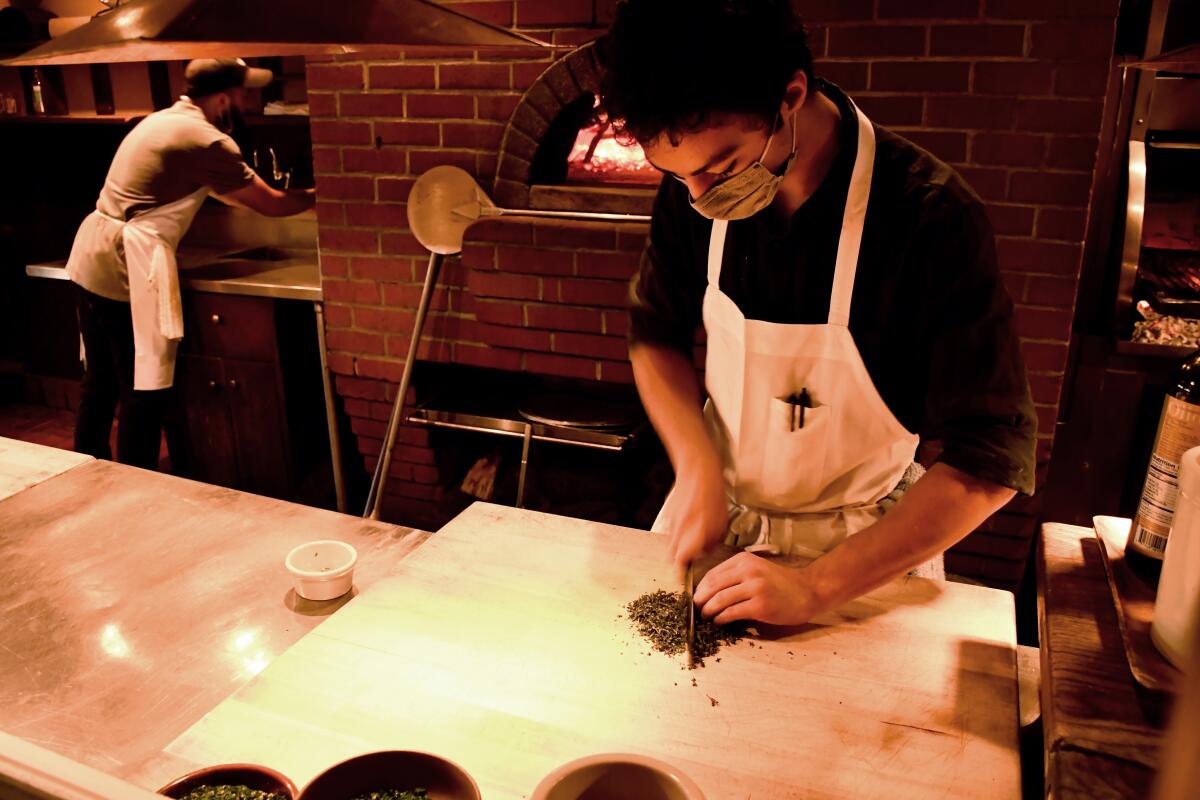
Chez Panisse
Half a century later, Chez Panisse is still popular, but under pandemic limits, it’s been surviving on takeout dinners and lunches and market sales. The plan is to open indoor dining in January — in both the tonier downstairs dinner-only restaurant and the more affordable upstairs cafe, which likely will do lunch and dinner. Until then, you can order meals to go up to three days ahead through the Chez Panisse website. The menu, seasonally tuned, changes often. The restaurant is closed on Sundays.
Pro tip: This stretch of Shattuck Avenue, known as the “gourmet ghetto,” also includes the Cheese Board Collective, just across the street from Chez Panisse and founded in the same year. Besides the bakery’s array of cheeses and breads, it has a pizzeria next door with outdoor tables, which Chez Panisse lacks.
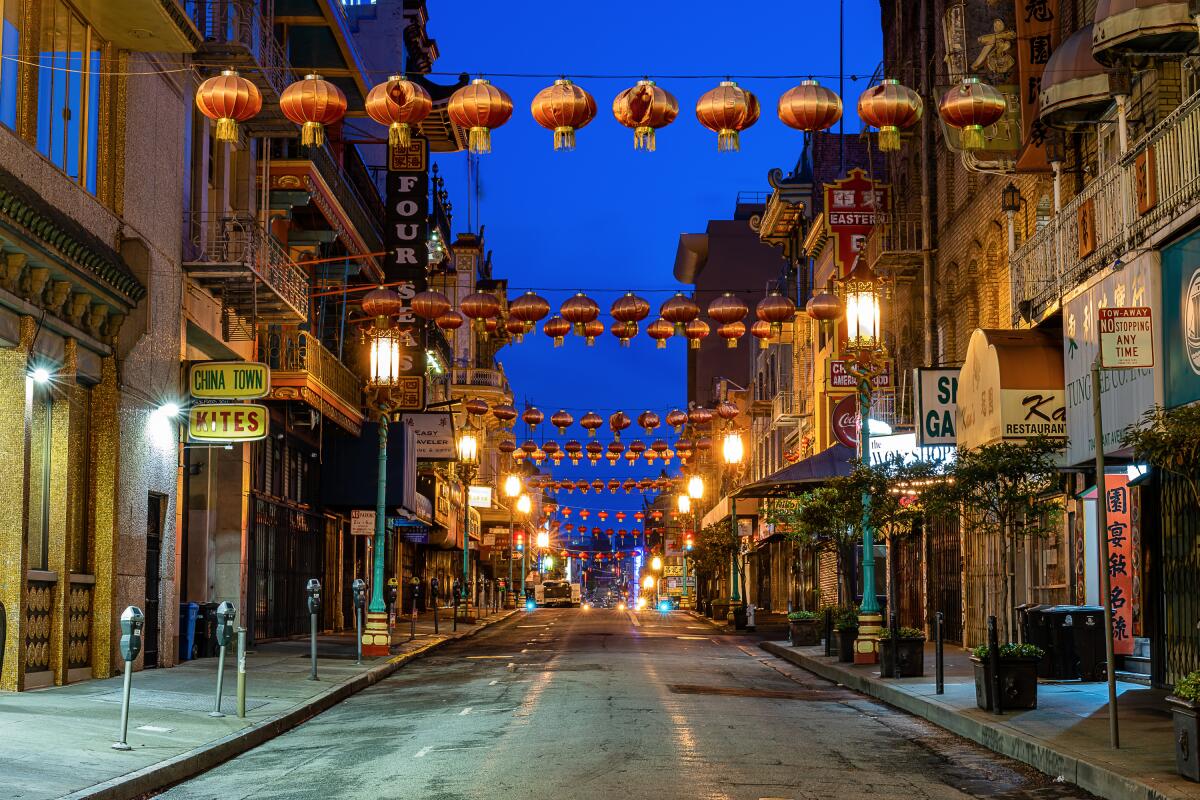
Chinatown
So get yourself to Chinatown’s Portsmouth Square, where Brannan flashed his nugget and lots of locals now play cards and ride skateboards. Walk among the dangling lanterns of Grant Avenue, the oldest street in the city, although lack of tourists during the pandemic has closed some retailers and restaurants. Walk Stockton Street, where markets are still full of Asian produce and browsing Chinese seniors.
Pause at Waverly Place, where tall, old buildings and their balconies are brightly painted like esteemed elders in stage makeup.
For a taste of what might be coming, check out the China Live food bar-and-retail complex on Broadway (opened in 2017), which is basically the Chinese answer to Eataly. Sample Mister Jiu’s on Waverly Place (opened 2016) or Empress by Boon (opened in June 2021, with wraparound views of the city and bay).
Expect plenty of neighborhood excitement around Chinese New Year (Feb. 1) and the Chinese New Year Parade (Feb. 19), which was canceled in 2021.
Pro tip: The tiny Golden Gate Fortune Cookies factory (on Ross Alley since 1962) and the Chinatown Kite Shop (on Grant Avenue since 1969) are fascinating stops for families with young children.
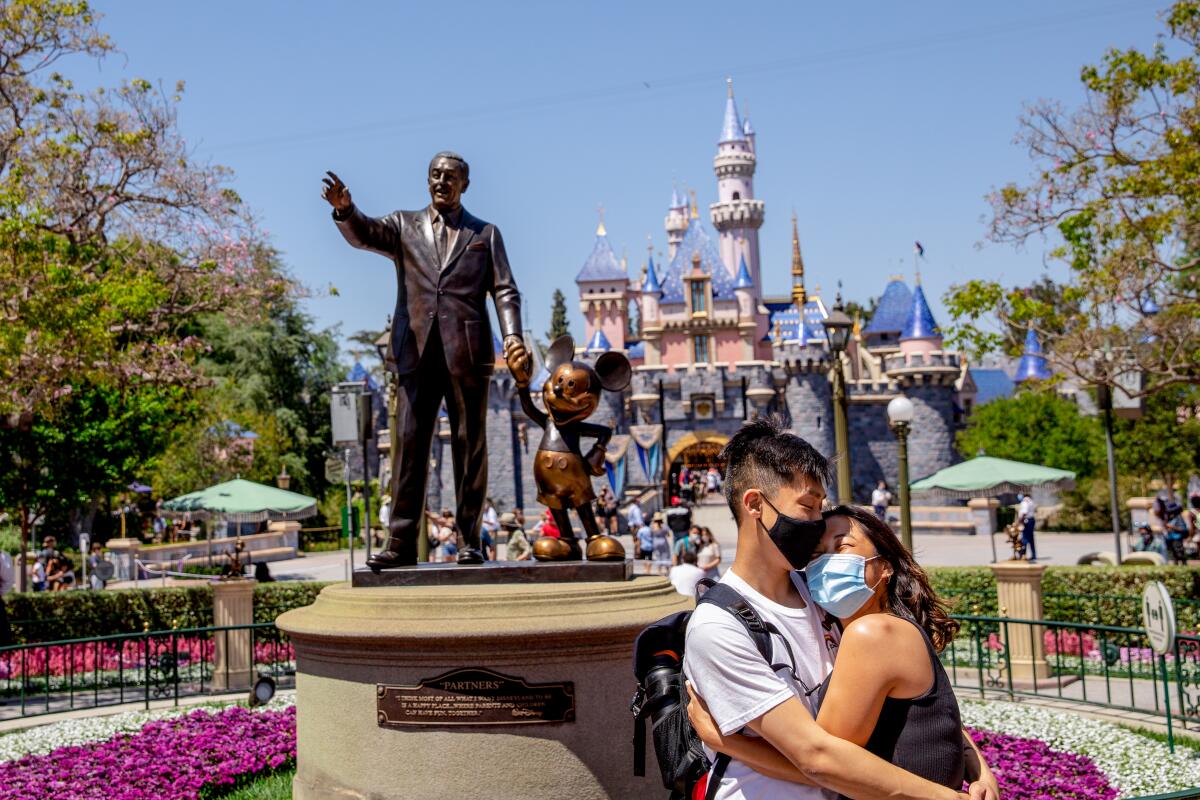
Disneyland
My favorite new thing at Disneyland is also one of its oldest: the Jungle Cruise, born in 1955, formerly freighted with colonial-era stereotypes. It has been updated to make some fictitious tourists the butt of most jokes and to give chimps and monkeys the upper hand.
Happily the new version is just as full of godawful tour-guide puns as the old one, and it gets more laughs out of animal antics. As Times critic Todd Martens has noted, the updating follows in the revision tradition of “Pirates of the Caribbean” (changed in 1997 and again in 2018). Jungle Cruise also re-opened (in July) as Disney’s “Jungle Cruise” movie was entering the world. I can’t speak for the movie, but the new cruise, still only about seven minutes, kept me grinning, right down to the line your fifth-grader will love the most, when the guide points to the elephant and says, “A lot of people think it’s water coming out of her nose. But it’s … not.”
By the way, the Disney people really want you to devote multiple days to covering Disneyland (85 acres), Downtown Disney (20 acres) and Disney California Adventure (72 acres), but it will cost you. My one-day, one-park adult admission on a summer weekday was $139, plus $25 for parking. Disney raised admission fees in October.
Pro tip: The park overhauled its yearly pass program in August. Under the new setup, the most affordable option, offering access to Disneyland and Disney California Adventure, is a $399 yearly Imagine Key (Southern California residents only), which blocks visits on 218 of the year’s 365 days and excludes parking. The fanciest option: the $1,399-yearly Dream Key, which has no blocked dates and includes parking. Reservations are booked until the new year but sometimes open up.
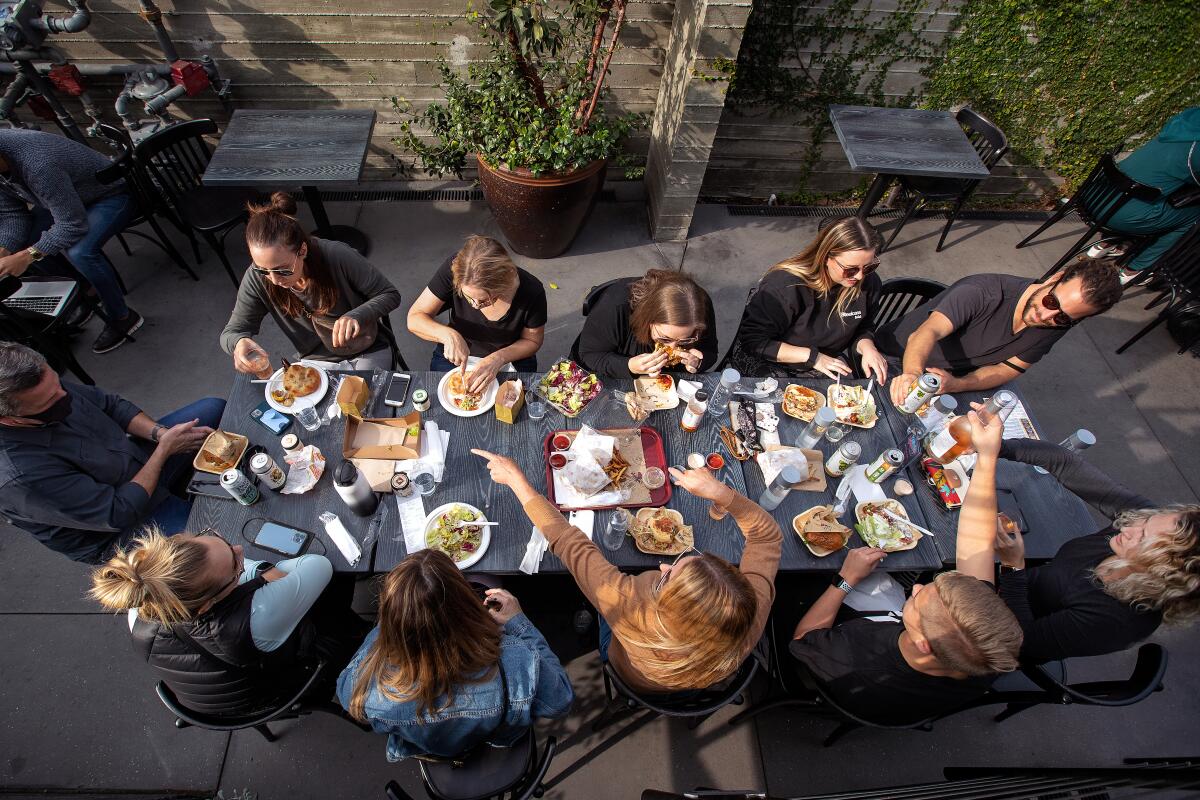
Downtown Culver City
Besides the cluster of eateries and retailers near the Culver Hotel on Culver Boulevard and Main Street, the Citizen Public Market food hall opened in late 2020, filling a 1929 building with several restaurants and bars, including Pizzette from Nancy Silverton and the rooftop Bar Bohemien.
Couples and families linger at Culver Steps, a combination of public space, retail and office space completed in 2019. Kids play amid the water jets of the Lion’s Fountain in the Town Plaza.
At the center of the action stands the Culver Hotel (established 1924), whose quirky flatiron shape is filled with 46 rooms and a restaurant and lobby bar (closed for now).
Also nearby: the Shay Hotel (opened in October), Sony Pictures studio (sorry, no tours), the Kirk Douglas Theater, the Ripped Bodice (an all-romance bookshop), the Museum of Jurassic Technology (open by appointment, perplexing by design), the indie-spirited shopping center Platform and the Helms Bakery District, where furniture and design shops and other retailers have taken over a landmark 1931 bakery complex.
Pro tip: The Culver Hotel’s 21st century resurgence follows some star-studded early years and then several grim decades (including a spell under ownership of John Wayne). Among the guests in those early years: dozens of actors playing Munchkins in “The Wizard of Oz,” Buster Keaton, Clark Gable, Greta Garbo and Lupe Velez.
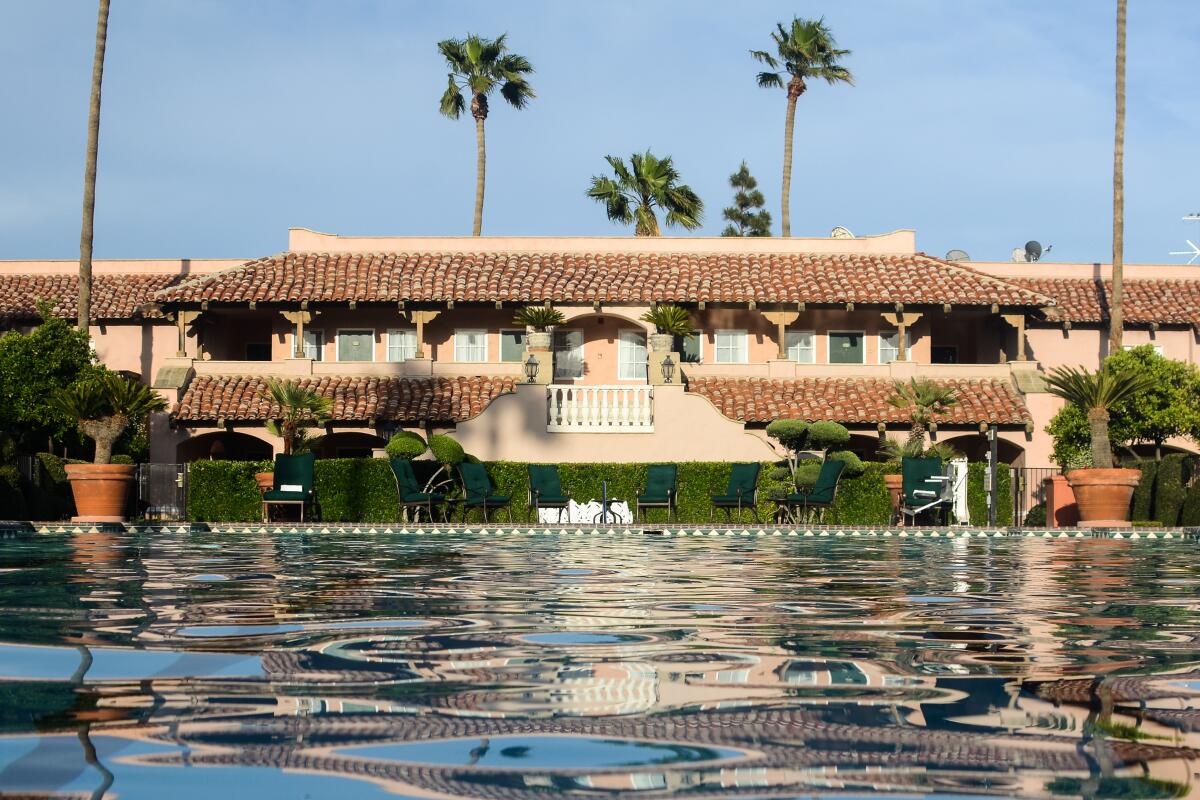
Harris Ranch
Thus Harris Ranch, which is neither scenic nor historic and stands in Coalinga, has become indispensable to California travel. The ranch dates to the 1930s but didn’t become relevant to travelers until 1977. That’s when the Harrises, already busy with cattle and crops, opened a burger stand to serve north-south drivers passing through the Central Valley on the just-completed Interstate 5.
Then the burger stand became a steakhouse. And store. And hotel. Now, though they sold much of their cattle operation in 2018, the Harris people have a thriving roadside citadel. The dining operations — Ranch Kitchen, Prime Steakhouse and Horseshoe Lounge — seat more than 450 people at a time, serving vast quantities of high-quality steak. There’s a bakery. The hotel has 153 rooms and an Olympic-style pool. The gas station is neighbored by Harris Ranch Express BBQ.
It’s true that when the wind blows the wrong way, you may catch a whiff of the neighboring feedyards. (Author Michael Pollan says the ranch led him to change the way he eats.) Still, if you find yourself hungry or sleepy or desperate for a clean bathroom between San Francisco and Los Angeles, this place may be your refuge.
Pro tip: Fresno County is one of the few California jurisdictions that charge no hotel-room tax, and Harris Ranch Inn charges none of the half-hidden resort fees increasingly common at vacation hotels. As a result, a $169 room at the Harris Ranch Inn front desk will actually cost you $169. Breathtaking.
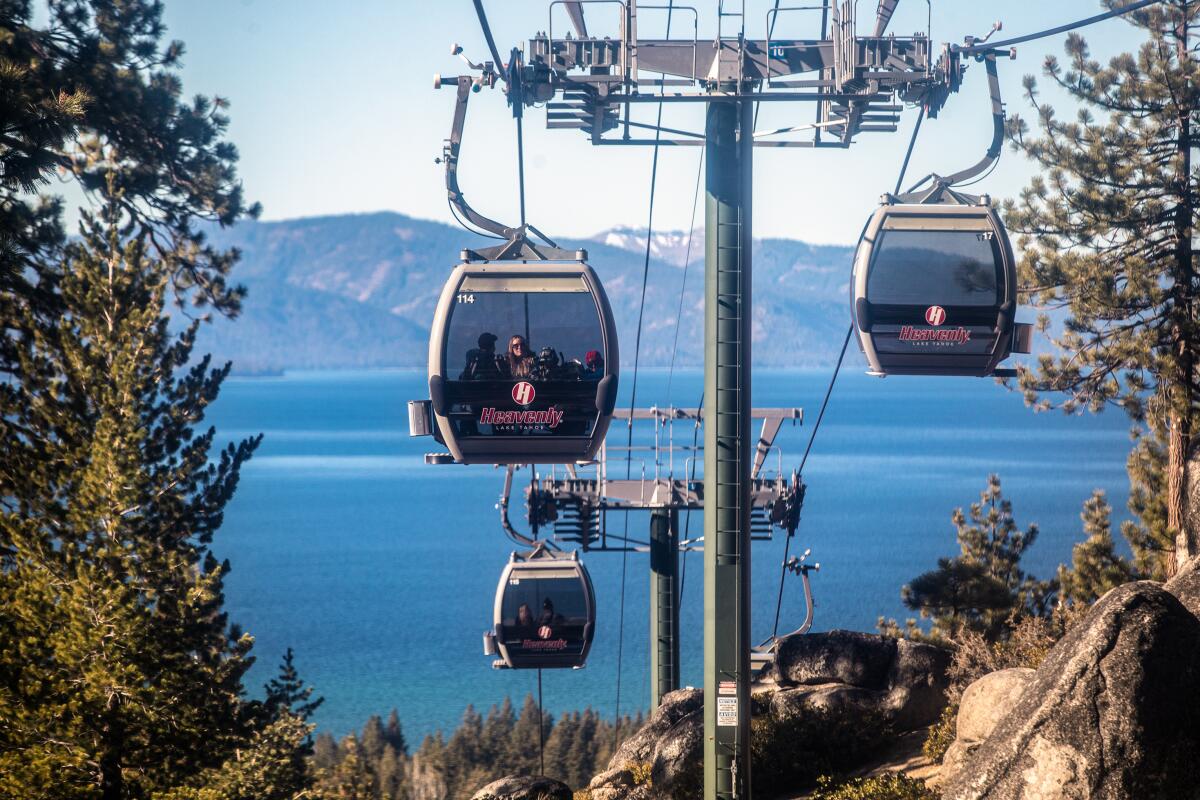
Heavenly Ski Resort
Heavenly’s Scenic Gondola carries skiers between the Heavenly Village and the slopes (which cross the state line into Nevada). The casinos of Stateline, Nev., begin just across the street from Heavenly Village. Dozens of mom-and-pop hotels and other businesses congregate around the village near Lake Tahoe’s southern shore.
The resort, which goes back to 1955, includes 28 lifts, 97 trails and 4,800 skiable acres. It has terrain parks and a skating rink too. Skiing and gondola operations were scheduled to open in early December, weather permitting.
Among the village restaurants, I liked Azul Latin Kitchen (especially the tacos). For something more casual? Base Camp Pizza offers up pies with barbecued chicken, pears and (you may begin arguing now) pineapple.
If you arrive by car via Highway 395, you’ll see little fire damage en route. If you come in by fire-scarred Highway 50 (as many visitors from Sacramento and San Francisco do), you’re likely to face road-repair delays. You’ll also see the one Tahoe resort that the Caldor fire did seriously damage — Sierra-at-Tahoe, not expected to reopen until January at the earliest. For details on all California ski areas, check snowpak.com, onthesnow.com or skicalifornia.org.
Pro tip: Whatever the season, make time to see the south shore’s Emerald Bay State Park, perhaps the most photogenic corner of an extremely camera-ready lake.
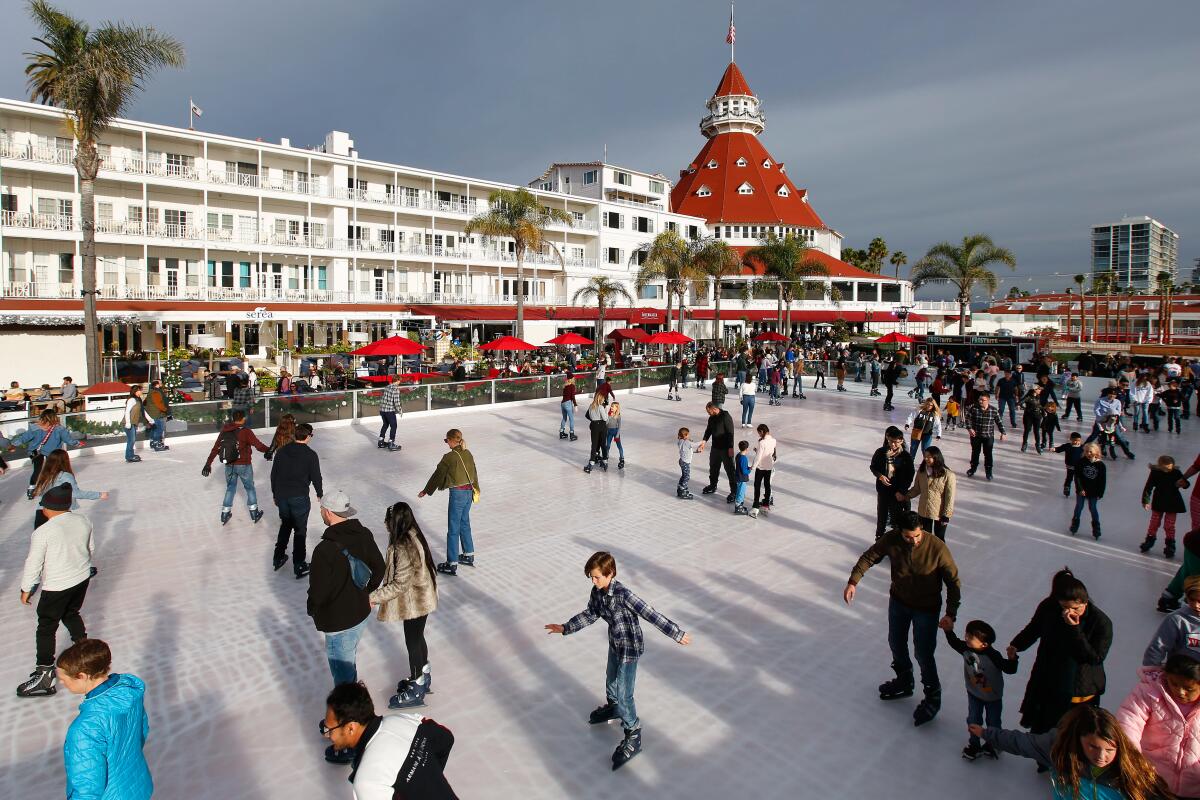
Hotel Del Coronado skating rink
You do — if you head to the Hotel Del Coronado’s Skating by the Sea. The resort’s seasonal rink is open through Jan. 2 ($35 for up to 90 minutes, skate rental included), and as long as you’re popping by, take a look at the hotel’s recently redone lobby, where a two-story Christmas tree is promised. After dark, you’ll catch thousands of holiday lights aglow on the landmark’s iconic red turrets (which date to 1888).
For my money, there’s no grander old resort, and no older grand resort, in California. (Rates usually start around $400 nightly, and the hotel has expanded repeatedly over the years, with more to come.)
Pro tip: Someone may try to tell you about Kate Morgan, a young woman who was shot to death in 1892 and is said to haunt her old room at the Del. Yes, she died. But does every old building need a hokey ghost story to make it interesting? No.
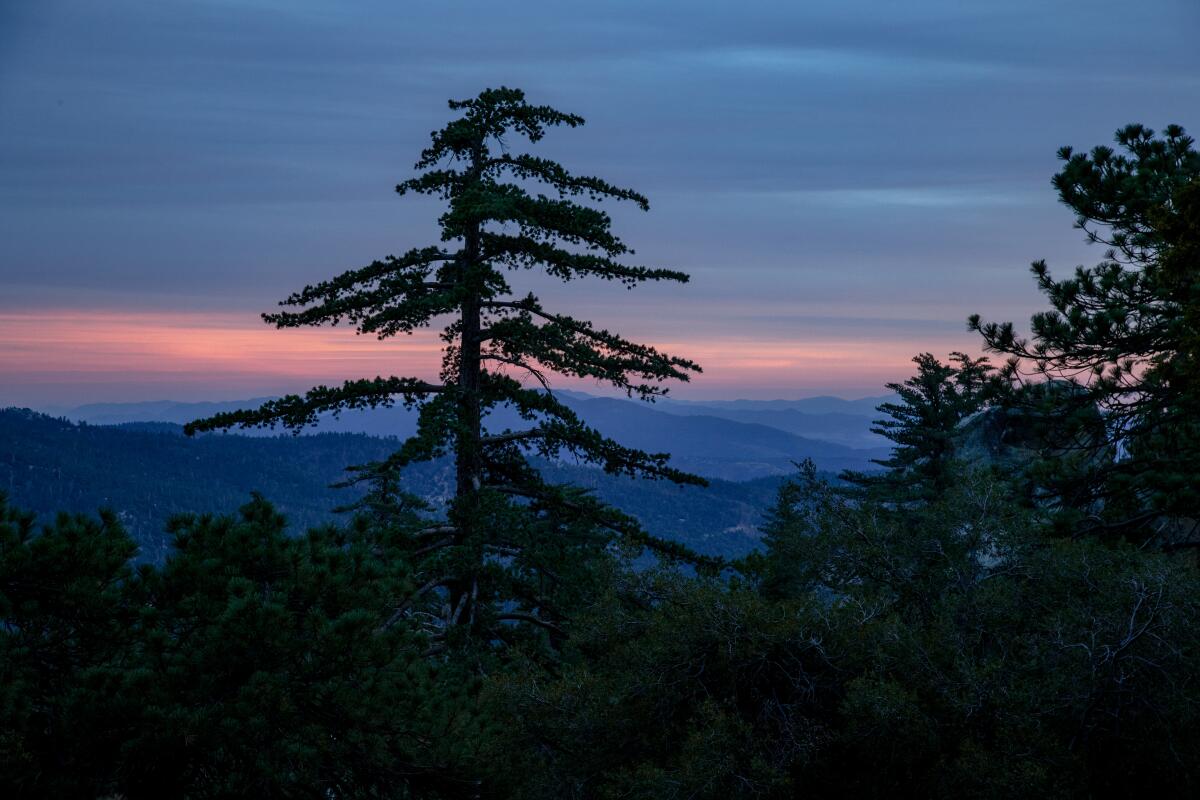
Idyllwild
Any excuse will do. It’s a great escape from life in the flatlands.
The town sits about 5,400 feet above sea level, attracting city folk to its inns, vacation rentals and casual eateries. For hiking, snow play, climbing or camping, the Idyllwild Nature Center (open Thursday through Sunday, about 1 mile northwest of town) is one place to start. Mt. San Jacinto State Park begins at the edge of town, and Idyllwild Regional Park has five trails and 88 campsites on its 202 acres.
Need food and caffeine? Higher Grounds Coffee House faces the town center from North Circle Drive. Cafe Aroma is an easygoing eatery with lots of sheltered patio seats. The Candy Cupboard has been offering caramel apples, taffy, chocolate, shave ice and other essentials since 1981.
Pro tip: If you encounter a golden retriever in the course of your adventures, use your best manners. It might be the mayor or a close relative.
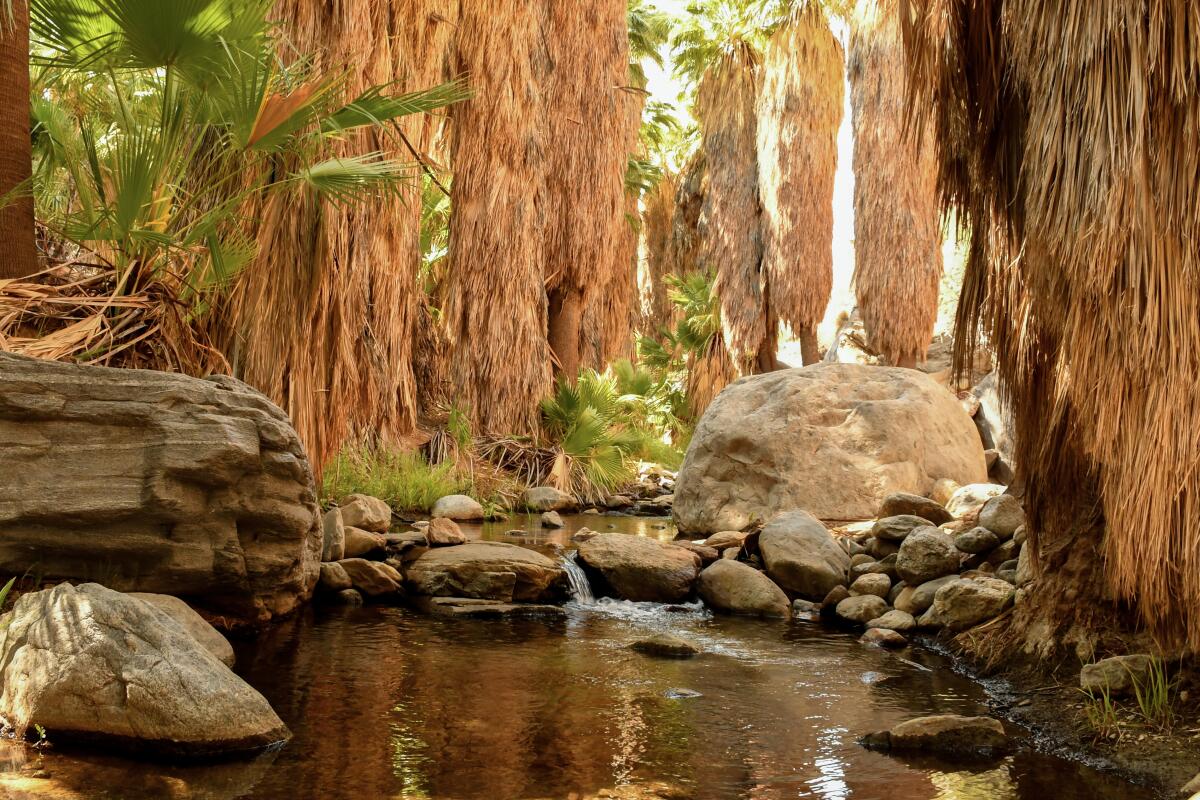
Indian Canyons
In Andreas Canyon, you follow a path along the year-round Andreas Creek, which is lined by Washingtonia filifera, the California fan palm. This is a genuine oasis, reached by an easy hike — a 1.2-mile round trip.
In Palm Canyon, a few miles away, the looping (and more demanding) 2.7-mile Victor Trail drops into a shady, boulder-strewn fold in the desert hills where more native palms congregate, then returns along a higher ridge. There’s a “trading post” gift shop at the trailhead.
Those canyons, along with Murray Canyon and Tahquitz Canyon (which has a 60-foot seasonal waterfall), are all part of the Indian Canyons network of open space managed (and named) by Agua Caliente leaders. As tribal junior ranger Raven Longbow once told me at Palm Canyon: “I look at this place like a cathedral.”
However you approach the canyons, bring a good map and plenty of water. Adult admission is $12; open daily Oct. 1 through July 4. No pets allowed.
Pro tip: Keep an eye out for desert bighorn sheep (on the slopes above) and rattlesnakes (underfoot).
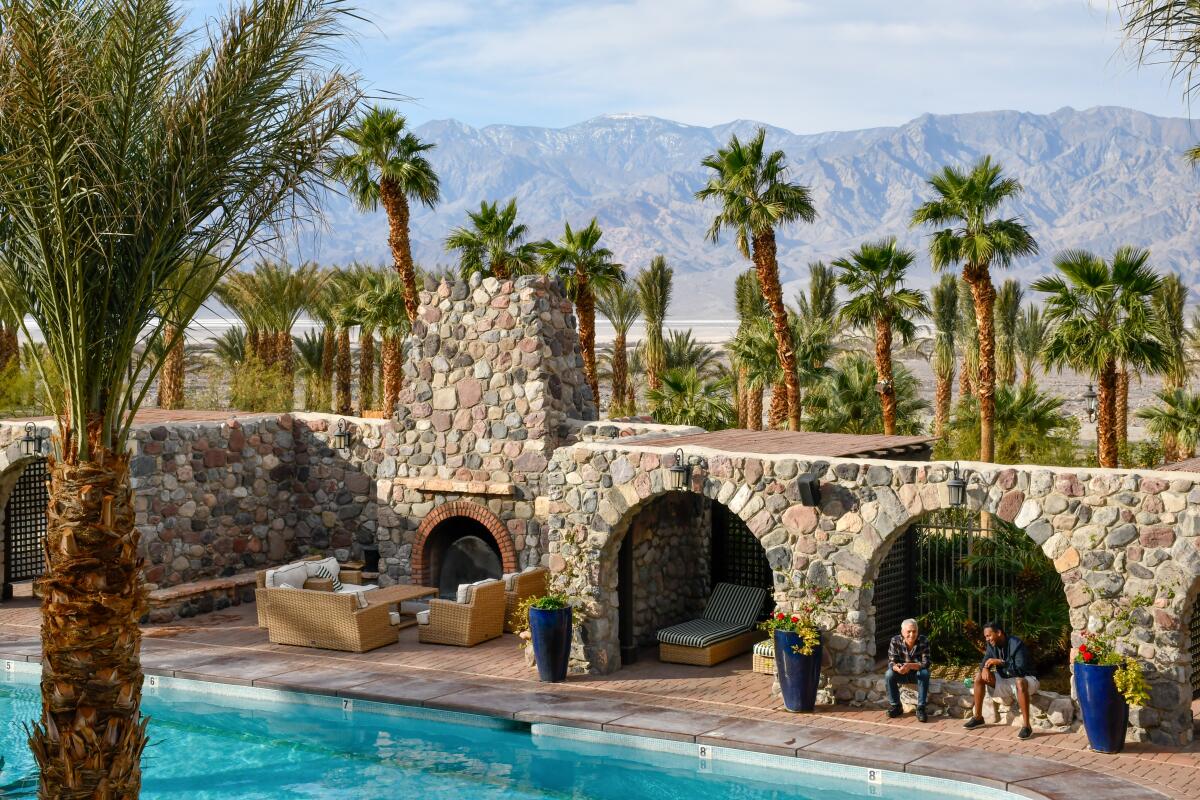
Inn at Death Valley
If your last visit to the hotel was a few years ago, you’ll see many differences. It used to be called the Inn at Furnace Creek. There used to be a gift shop where the reading room is. And besides the 66 rooms in the main part of the inn, the grounds now include 22 casitas. Rates these days start around $450 nightly.
Pro tip: It’s easy to confuse the Inn at Death Valley with the Ranch at Death Valley just 1.3 miles away. The Ranch is the one more people can afford. It’s a more basic, family-friendly hotel with 224 rooms and 80 new cottages that will debut in April. It also has a pool, shops and restaurants that were upgraded over the last three years.
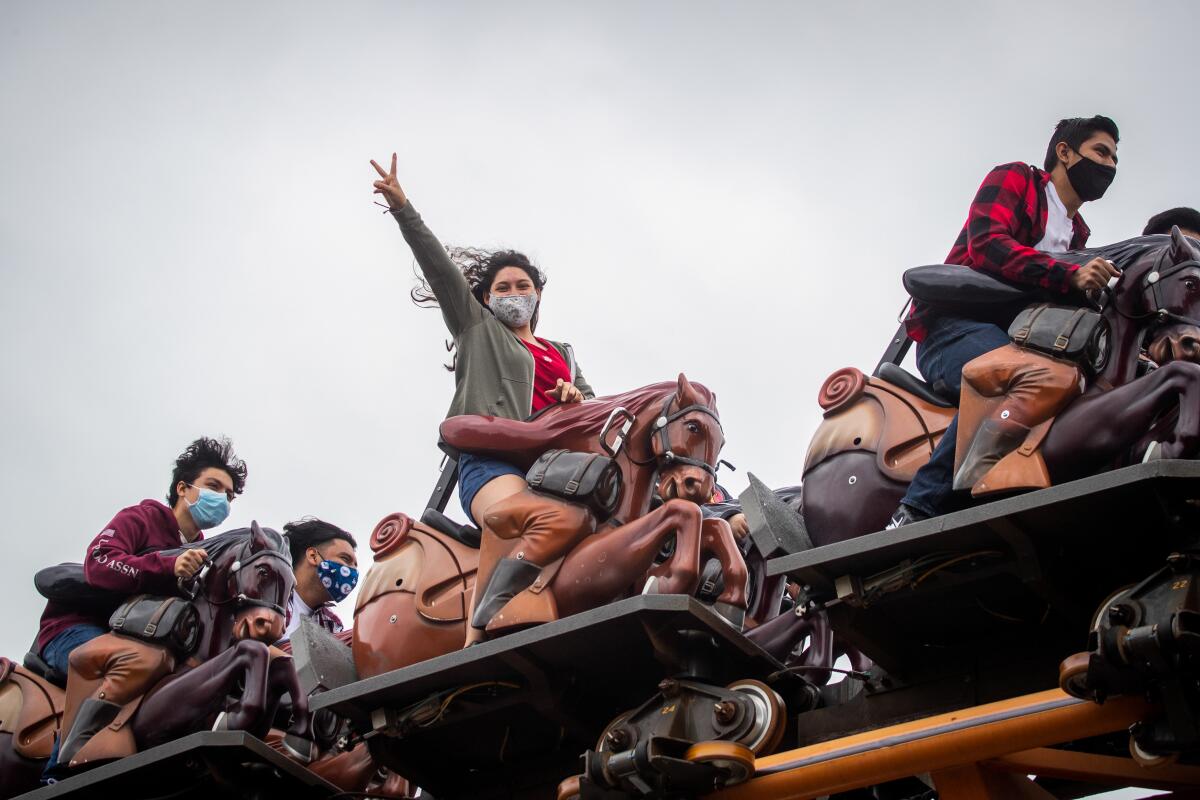
Knott's Berry Farm
In October, it’s a Scary Farm. In December (actually, Nov. 19 through Jan. 2), it’s a Merry Farm, with faux snow, carol singing, a Snoopy show with ice skaters and a Christmas craft village in Calico Ghost Town.
For many, the big draw is rides, including the Montezooma’s Revenge coaster, which does a full loop, forward and backward, seven stories high, at up to 55 mph.
Pro tip: On the long-popular Silver Bullet ride, you go upside down six times in about two minutes, rising up to 146 feet above the ground, then swooping again. Maybe try that before your meal at Mrs. Knott’s Chicken Dinner restaurant, not after.
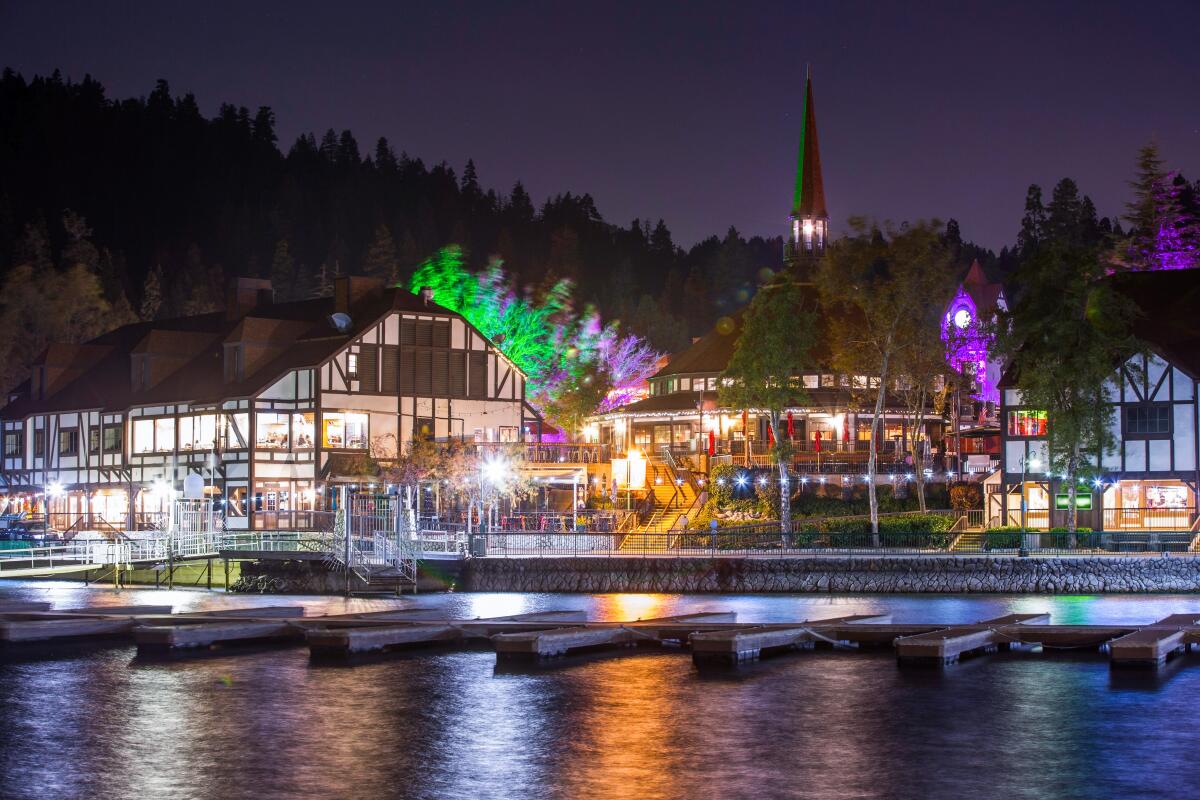
Lake Arrowhead
For one thing, the lake is privately owned, which means the only people allowed to put boats on it are Arrowhead Woods homeowners and their guests. The roughly 8,900 folks who live here tend to be wealthier and quieter than those in Big Bear.
If you rent a house or book into a local hotel for a few days, your movements probably will revolve around the waterfront Lake Arrowhead Village, a Tudor-style retail compound that dates to the 1970s and includes about 50 specialty and outlet stores such as Coach and Pendleton. Belgian Waffle Works is a popular breakfast spot.
The Lake Arrowhead Resort & Spa has 173 rooms and a private beach on the lake. The more intimate Saddleback Inn, which dates to 1917, offers 14 rooms, 20 cottages and Diane’s Saddleback Grill.
Nearby Skypark at Santa’s Village is big with families. Day passes through Jan. 2 go for $69 per adult, $59 per child (ages 4-12).
Pro tip: The lake has a tour boat. Head to LeRoy’s Board Shop and buy tickets for an hourlong narrated cruise on the 65-passenger Arrowhead Queen ($24.95 per adult, $19.95 per child ages 3-11).
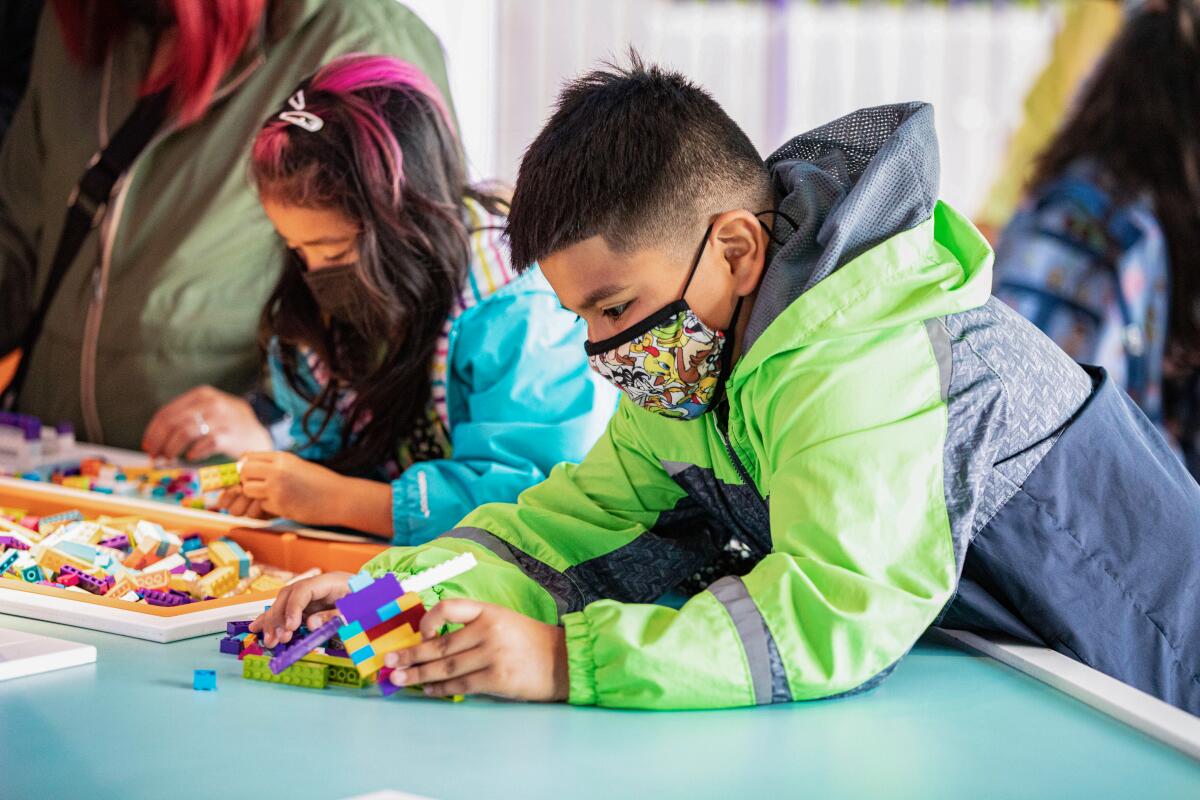
Legoland California
Legoland California in Carlsbad is at once homegrown and international, a 120-acre theme park that wouldn’t exist if some guy in Denmark hadn’t started stamping out colorful, connectable plastic bits in 1949.
Now there’s a global Lego empire, and the Carlsbad park, opened in 1999, is one of 10 worldwide. It includes an adjacent Legoland Hotel and Castle Hotel (both kid-centric), about 60 rides, shows and attractions, and plastic-brick renditions of the Taj Mahal, Eiffel Tower, Mt. Rushmore, the Manhattan skyline and so on. Next door stand an aquarium and water park (with separate admission fees).
One-day admission starts at $89.99 for adults. You’ll pay an additional $10 per person for an extra day plus access to the water park and aquarium. Advance reservations are required to get in the park.
Pro tip: Just as the pandemic was beginning, the main park unveiled its biggest change since opening: a 2-acre Lego Movie World aimed at the same young families who made hits of “The Lego Movie” and “The Lego Movie 2: The Second Part” in 2014 and 2019, respectively.
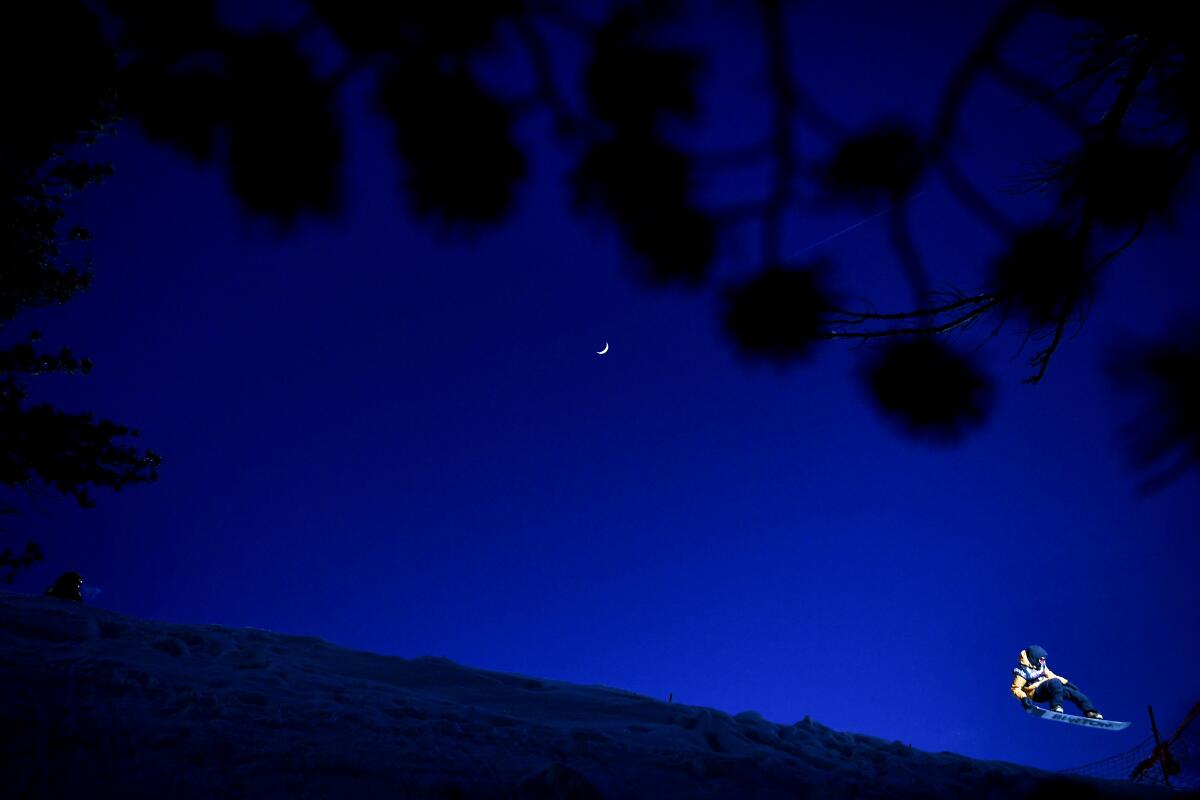
Mammoth Mountain
With an altitude that often allows for early opening (Oct. 29 this year) and a mountain full of everything from black-diamond runs to welcoming beginner slopes, Mammoth Mountain and the neighboring town, Mammoth Lakes, are a winter habit for legions of skiers and boarders.
The summit (at 11,053 feet) is the highest of any California ski destination. The town (population about 8,200) includes thousands of hotel rooms, condos, B&Bs, rental cabins and homes.
The resort includes 28 lifts, 150 trails and 3,500 skiable acres. After shutting down most indoor offerings in the winter of 2020-21 because of the pandemic, public health officials are allowing the resort to do more things indoors this year — depending on the status of the pandemic. One-day lift tickets cost about $119-$167 on weekends.
Although most visitors drive up Highway 395 to reach the mountain (310 miles north of L.A. City Hall), this winter through April 4, Advanced Air is offering several public charter flights per week to Mammoth from Hawthorne, Burbank and Carlsbad. Also, on Dec. 19, United begins seasonal daily service between Los Angeles International Airport and Bishop airport, about 50 miles southeast of Mammoth.
For details and updates on the slopes at Mammoth, check snowpak.com, onthesnow.com or skicalifornia.org.
Pro tip: For a more quiet, intimate snow escape, head for Tamarack Lodge, a lakeside log-cabin inn and restaurant with an inviting stone fireplace and cross-country ski center. It’s about a mile from Mammoth Mountain. Built in 1924, it includes 11 guest rooms, 37 cabins and a gourmet restaurant, the Lakefront (dinner only).
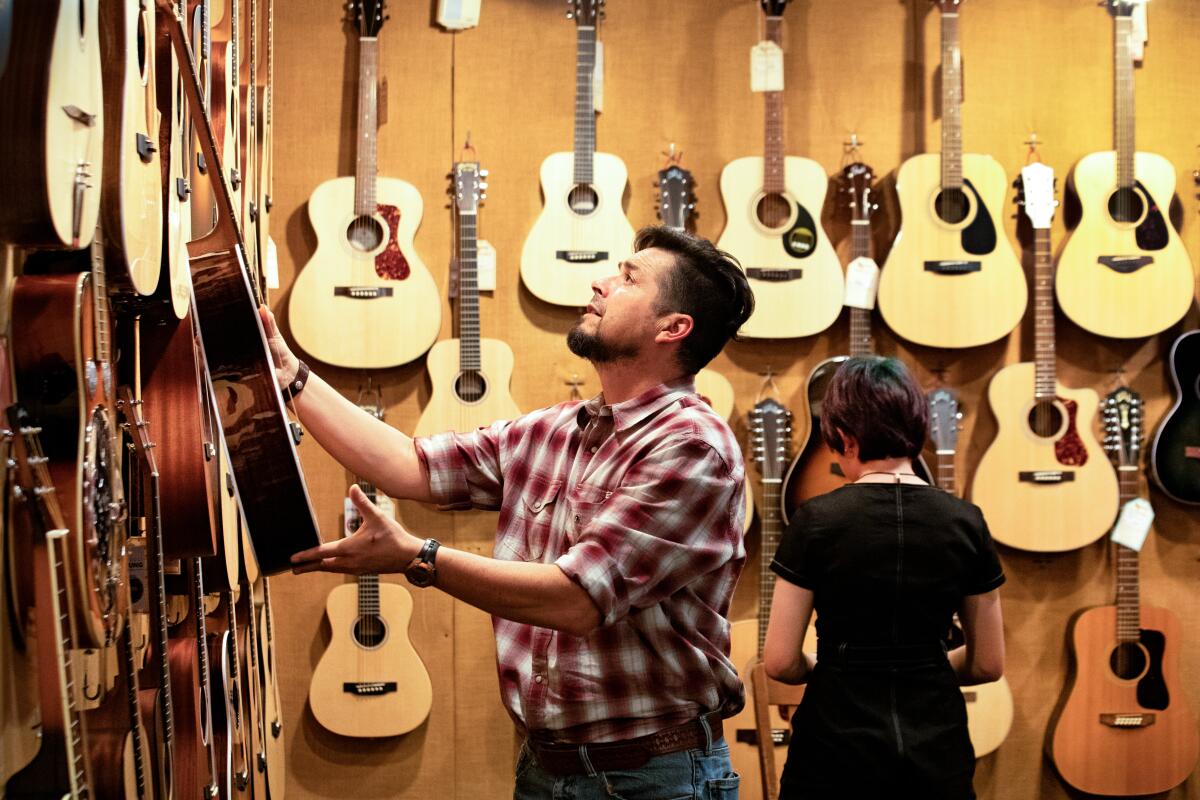
McCabe's Guitar Shop
The key is its back room, a venue for live shows that seats 150 people. It’s one of the most treasured stages in California, especially if your taste runs to acoustic and folk performers. By day, McCabe’s has been selling stringed instruments since 1958. The concerts began in 1968, were suspended during the pandemic and are due to resume in January.
Pro tip: Singer-songwriter Janis Ian, who got famous in the ‘70s with her song “At 17,” is due to play McCabe’s in March on the brink of her 71st birthday.
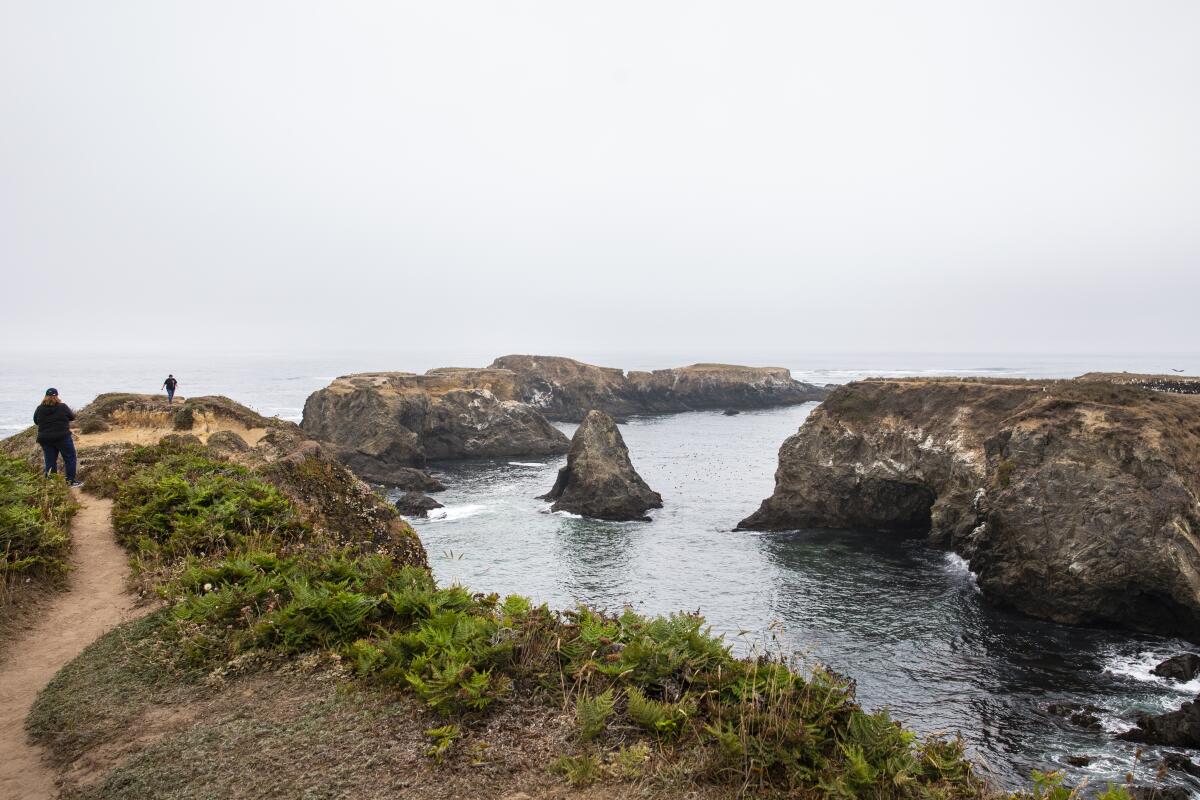
Main Street, Mendocino
It’s an eerily attractive little town — perhaps because it looks so much like a misplaced corner of Maine (minus winter snow) despite being 150 miles north of San Francisco.
Built on bluffs overlooking the Pacific, Mendocino (population: about 850) grew with the region’s logging boom in the late 19th century, revived with an influx of artists in the 1950s, and nowadays is dominated by galleries, inns, the Mendocino Hotel (built in 1878), the impressive Gallery Bookshop and the almost gritty Dick’s Place bar. Nary a franchise in sight.
Pro tip: For decades, Cafe Beaujolais has been a favorite spot for special dinners, but the meal I loved most on my last visit was a vegetarian Southern dinner at Fog Eater Cafe, which opened in 2019.
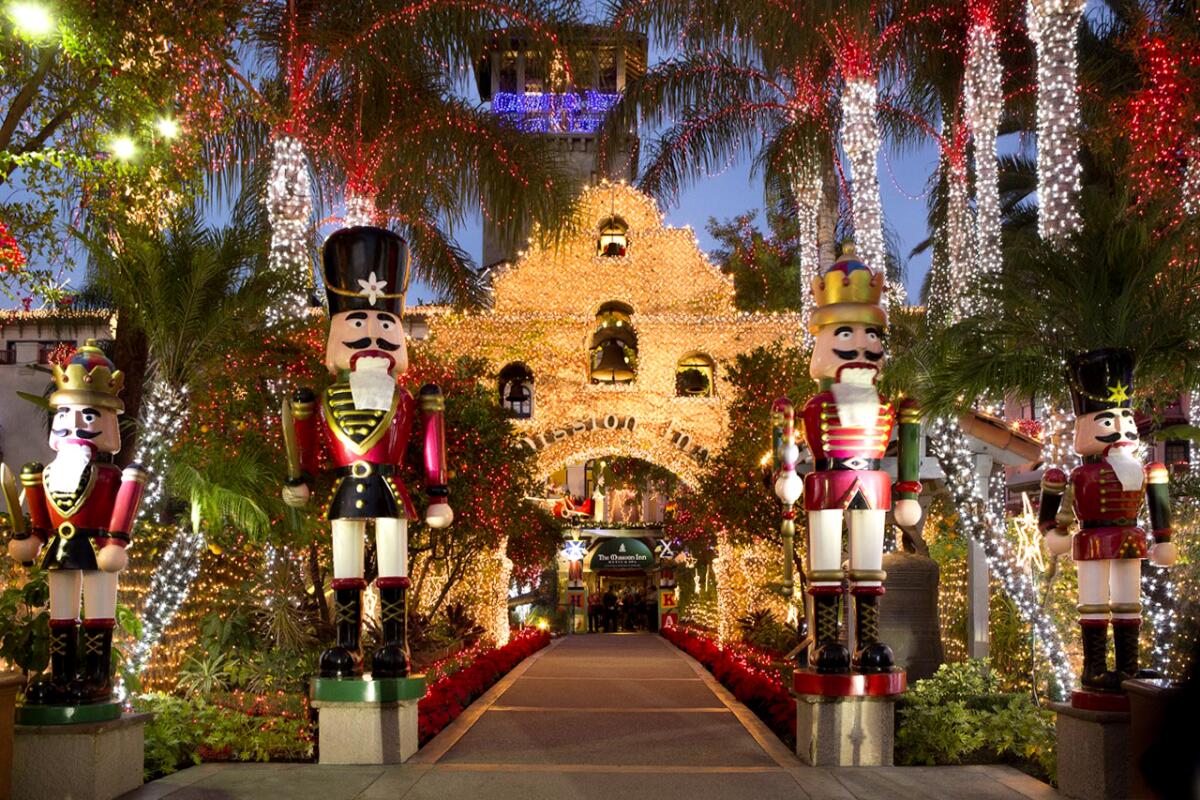
Mission Inn
For six weeks at Christmastime, the landmark hotel switches on about 5 million lights and invites visitors to stroll for free through the property, including a tunnel where faux snow falls. This winter’s festival runs through Jan. 6.
The crowds, traffic and parking can be a challenge, however. To skip the line, book dinner at the Mission Inn Restaurant (main dishes $21-$54) and you may land at a patio table, surrounded by domes, towers, arches and buttresses, augmented for the season by angels, gnomes and polar bears, many of which move like the animatronic President Lincoln in Disneyland. (Overnight stays start at $229.) While you’re there, raise a glass to hotel owner Duane Roberts, a local boy who made his first fortune selling frozen burritos.
Pro tip: The Cheech Marin Center for Chicano Art & Culture — the Cheech, for short — is due to open next door on May 8. The center, to be run by the Riverside Art Museum, will show off Marin’s collection of works by artists including Patssi Valdez, Sandy Rodriguez, Carlos Almaraz, Frank Romero and Gilbert “Magú” Luján.
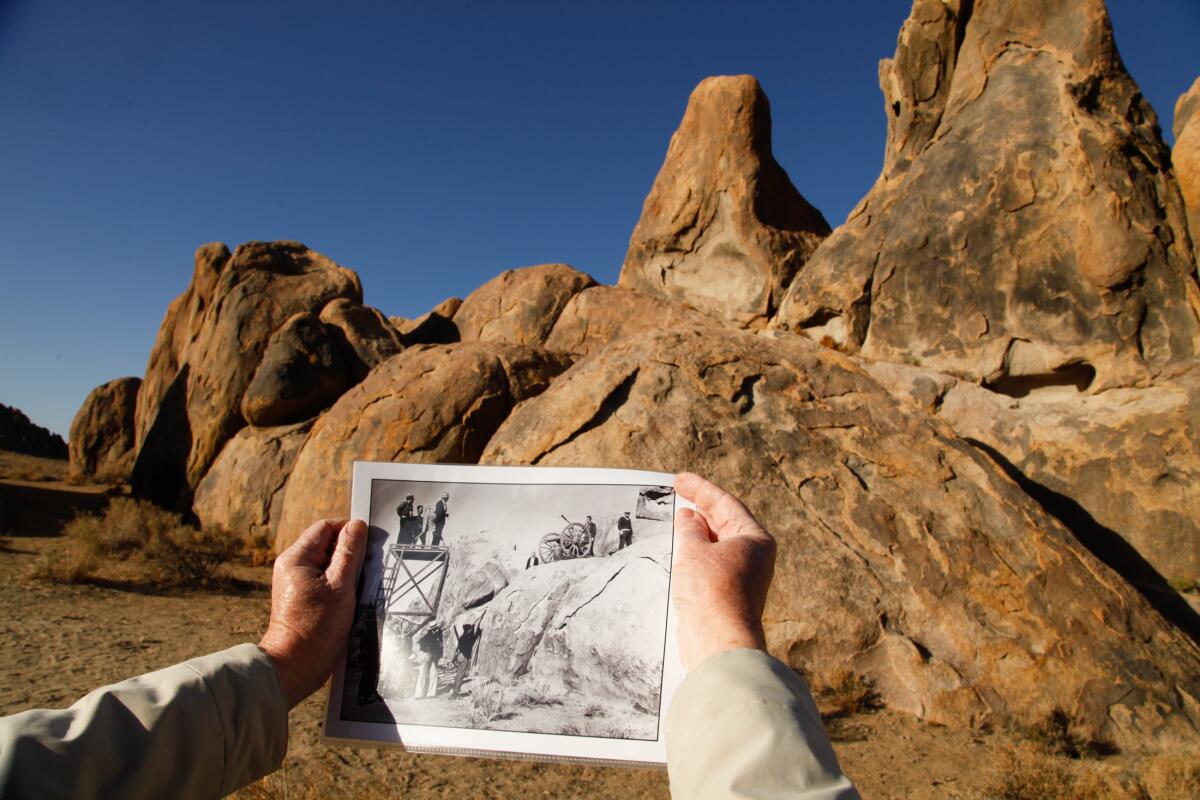
Museum of Western Film History
You’ll also learn how some 400 movies, countless TV episodes and myriad commercials have been shot in the hills of the Eastern Sierra, with Mt. Whitney, Mobius Arch and the boulders of the Alabama Hills threatening to steal every scene. The museum, open Thursday through Sunday, was born in 2006.
Your second stop is the Alabama Hills themselves, which begin about two miles west of the museum. Using a map from the museum, you can drive Movie Road and walk Lone Ranger Canyon, scanning the strangely familiar landscape and reviewing the list of titles filmed there, including parts of the “Iron Man,” “Star Trek” and “Star Wars” franchises.
Pro tip: The museum stages a four-day Lone Pine Film Festival every October, screening films shot in the area. The event includes location tours, interviews and a parade on Main Street.
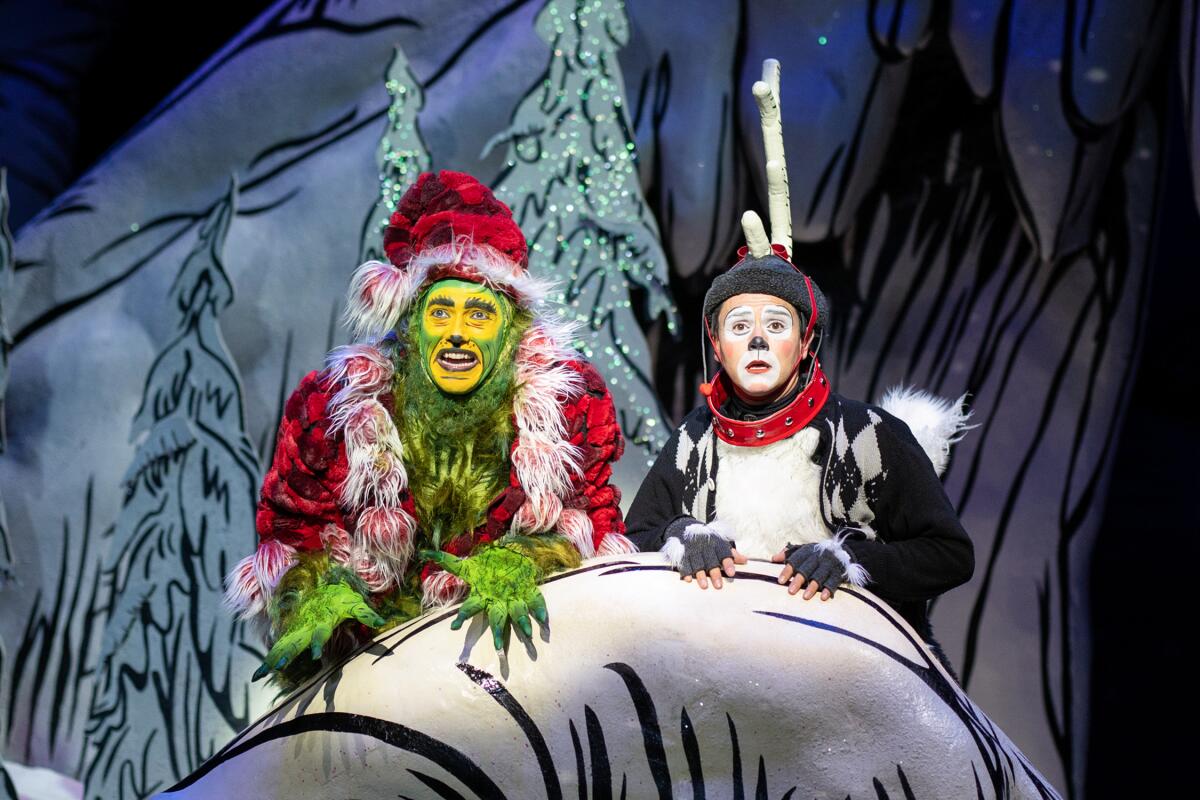
The Old Globe
“Dr. Seuss’s How the Grinch Stole Christmas!” runs through Dec. 31, open to ages 3 and up. This is the Globe’s 24th year presenting the Grinch, whose creator, Dr. Seuss (a.k.a. Ted Geisel), lived in La Jolla for about 40 years. (Last year’s show was audio only, airing on local public radio.)
Also, “Ebenezer Scrooge’s BIG San Diego Christmas Show” runs through Dec. 26.
Pro tip: The much-awaited Comic-Con Museum is the park’s newest addition. It began a gradual opening Nov. 26 in the park’s Federal Building.
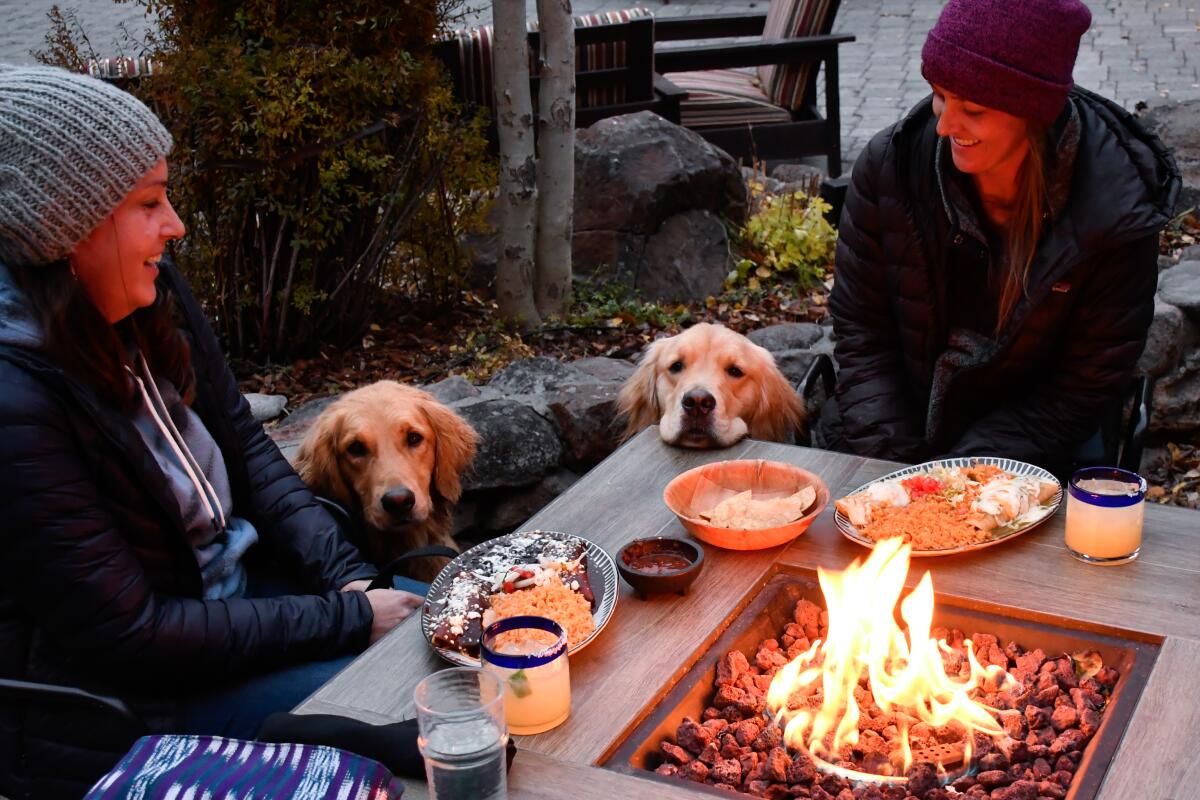
Palisades Tahoe
One is Olympic Valley, with 29 lifts, 170 trails, nearly 3,600 skiable acres, five terrain parks and proud history as the site of the 1960 Olympics. But never mind that. Just look at the way its aerial tram dangles above a majestic, forbidding pile of boulders known as Tram Face.
The second mountain, a seven-mile drive away, is the Alpine Meadows area (13 lifts, 100 trails and 2,400 skiable acres). Because of its location, locals say it has the longest potential ski season of any local resort.
Still, with snow in short supply in November, Palisades began December with just two chairlifts running, its aerial tram open Friday through Sunday for sightseers only. For skiers’ details on California slopes, check snowpak.com, onthesnow.com or skicalifornia.org.
Pro tip: In the Village at Palisades Tahoe, you’ll get hearty portions at Tremigo Mexican Kitchen (where I loved my carne asada but couldn’t finish it) and Guinness on tap at the Auld Dubliner a few steps away. Plumpjack Cafe (fine dining, opening date uncertain) is handy as well.
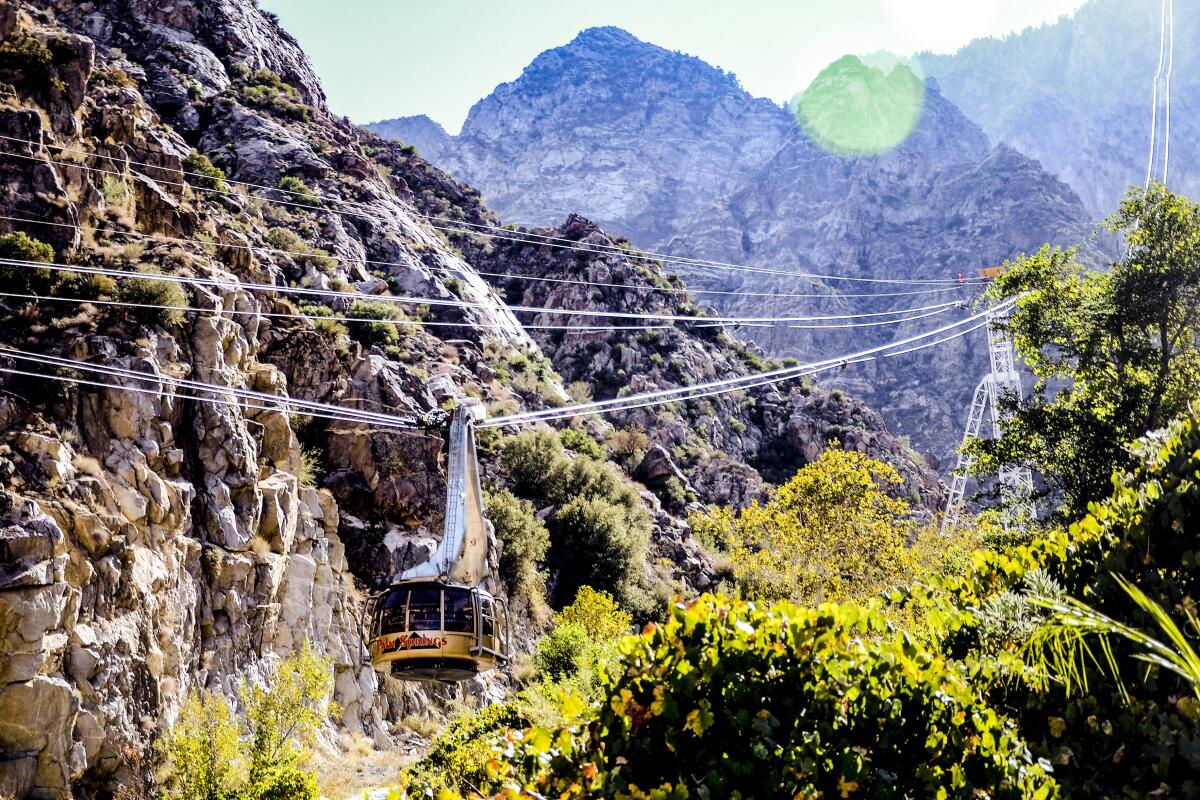
Palm Springs Aerial Tramway
Back in 1935, a man named Francis Crocker proposed a tram ride to connect the Coachella Valley desert floor to the upper slopes of Mt. San Jacinto. Twenty-eight years later, the Palm Springs Aerial Tramway opened.
After parking ($10), you step into Valley Station (elevation 2,643 feet), pay $28.95 (standard adult fare) and board the gondola, having made sure that there’s snow up high.
Then you begin the climb up Chino Canyon in a slowly rotating gondola (with open windows and a capacity of 80 passengers). It’s a 2.5-mile trip to Mountain Station (elevation 8,516 feet), where it’s typically 30 to 40 degrees cooler than at Valley Station.
The last tram up leaves at 8 p.m., so there’s time to catch sunset or dusk. There are a couple of restaurants at the top: Peaks is fancy but open only for lunch for now; Pines is a cafeteria open for lunch and dinner. The Lookout Lounge, also up top, serves beer, wine and cocktails until 8 p.m.
Pro tip: Once there’s a good amount of snow, the Mountain Station-adjacent Winter Adventure Center will open, offering rental snowshoes and cross-country skis. Call or consult the website to check the Adventure Center status.
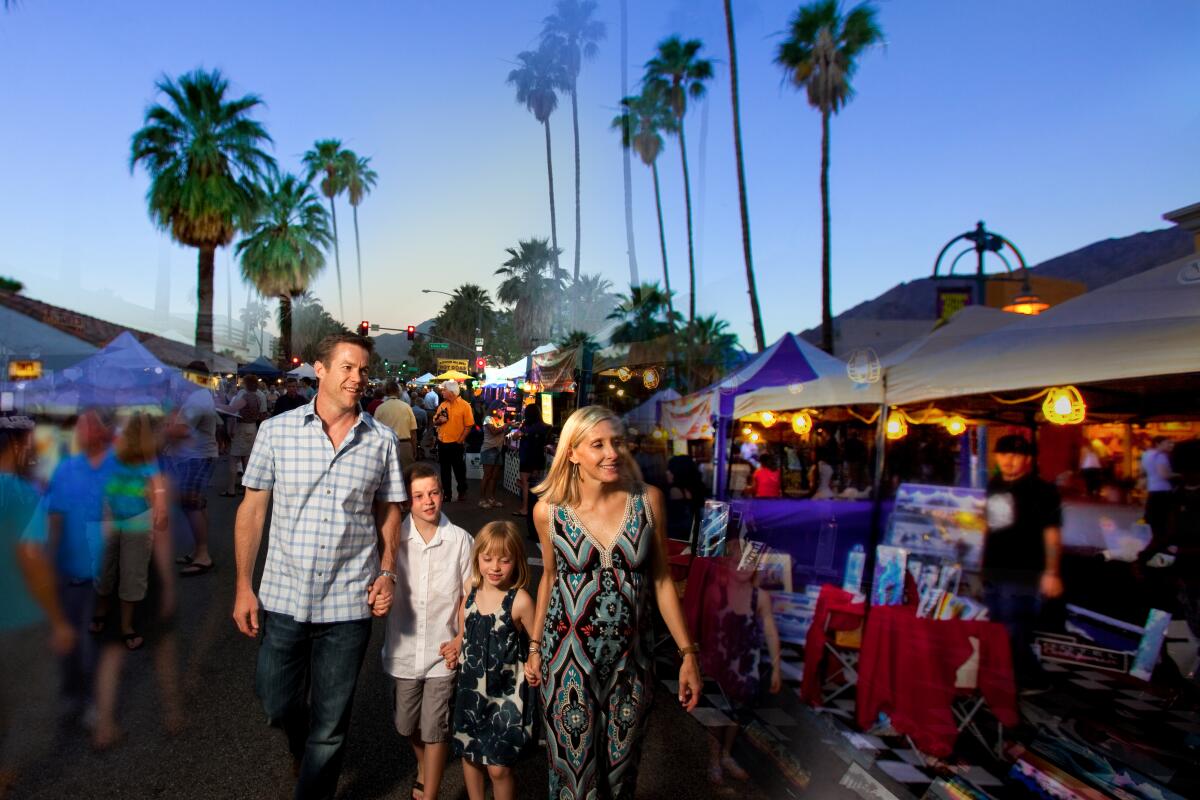
Palm Springs Village Fest
While the cars go elsewhere, about 180 vendors (food, produce, flowers arts, crafts) set up booths between Amado and Baristo roads. There’s live entertainment. Stores stay open late.
On Thursdays from October through May, the party runs 6-10 p.m. From June through September, it’s 7-10 p.m.
Pro tip: On Oct. 21, Palm Springs unveiled a new 1.5-acre Downtown Park (lawn, water feature) at Museum Way and Belardo Road, a block from the Village Fest and right next to the Palm Springs Art Museum and the city’s 26-foot-high “Forever Marilyn” statue, which some love and some abhor. L.A. Times art critic Christopher Knight calls it “adolescent sculptural trash.”
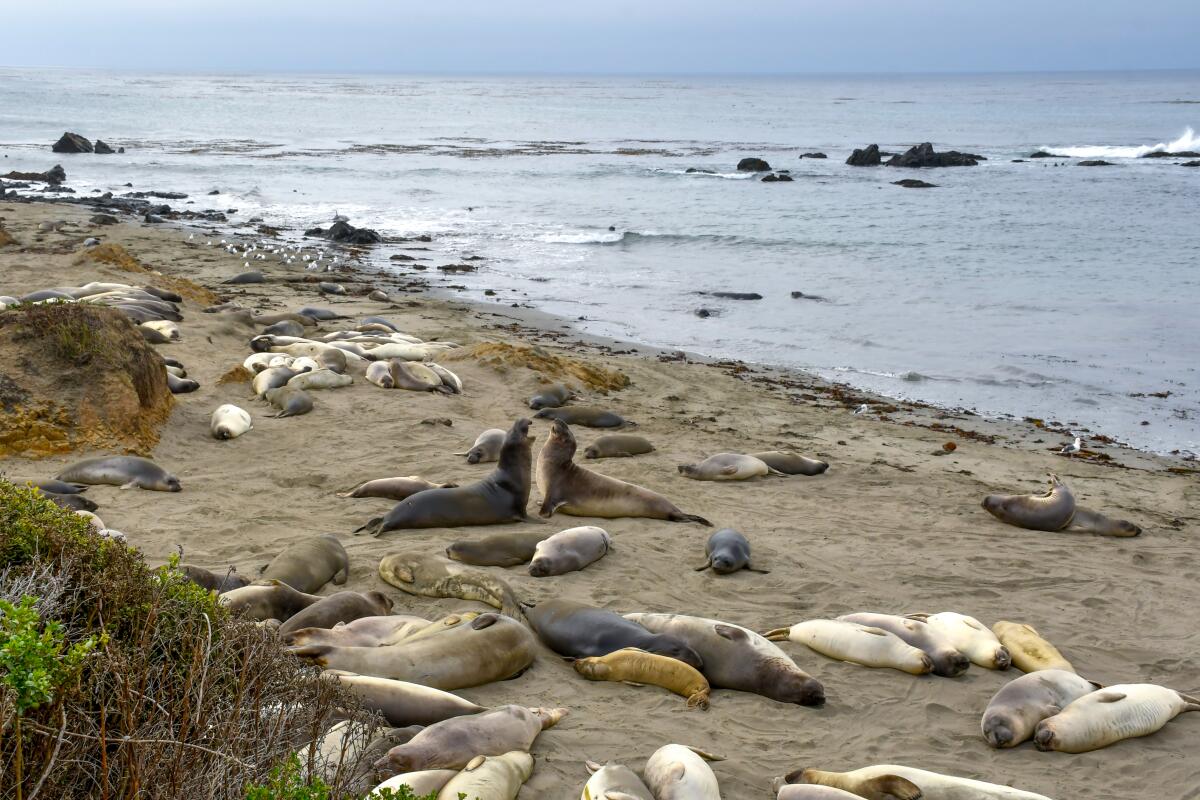
Piedras Blancas Elephant Seal Rookery
So, of course, you want to see them. And winter is prime time.
This will make more sense once you’ve arrived at Piedras Blancas, where hundreds of these seals at a time bask, spar, give birth and mate on a ridiculously beautiful stretch of state-controlled undeveloped coastline seven miles north of San Simeon.
It’s free and open every day. There’s a parking lot and boardwalk (wheelchair accessible), usually patrolled by a few volunteer docents in blue windbreakers. You watch and listen, walk the pathway and (as the National Park Service urges) stay at least 25 feet away from the hulking beasts. Keep dogs and drones away altogether.
They’re called elephant seals because of the large proboscis grown by the adult males (which get up to 18 feet long and 5,000 pounds).
In November, thousands of the males begin showing up after months in the open ocean, to skirmish over dominance. In December, pregnant females start gathering in “harems” around dominant males. In January and February they typically give birth, followed by the resumption of mating a few weeks later.
In March, the adult males are the first to leave, having lost up to 40% of their body weight in fasting, fighting and fornicating. Females and weanlings leave later, but the animals come back to molt in spring and summer.
Pro tip: Nineteenth-century fishermen nearly wiped out these creatures, using their blubber for lamp oil and lubrication. But the tide turned in 1922, when Mexico gave the animals protected status. The U.S. soon followed.
As numbers grew, a colony showed up at Piedras Blancas in the early 1990s and has been growing ever since. Elephant seals also are common at Año Nuevo State Park in Santa Cruz County and Point Reyes in Marin County.
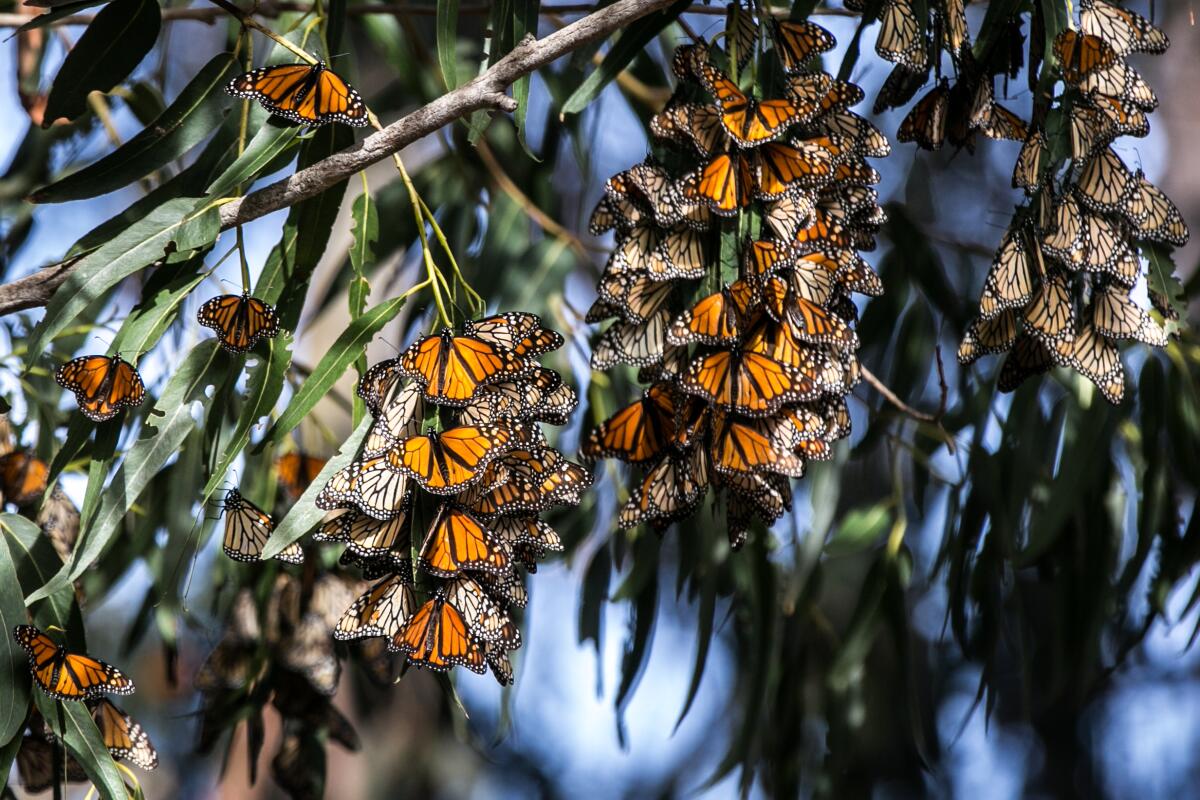
Pismo Beach State Monarch Butterfly Grove
Monarch butterfly populations have been dropping dramatically for years. And the Pismo Beach State Monarch Butterfly Grove, just a short stroll from the sandy shore, is an unprepossessing cluster of eucalyptus and cypress trees that may befuddle you at first, especially if it’s a cloudy day. But look closely.
Those dirty leaves you see might be monarch wings. When the sun comes out, their orange hues blaze and you realize how many butterflies you’re looking at. Even if the sun doesn’t come out, docents often have a telescope trained upon the biggest clumps of butterflies.
The monarch season at this grove usually runs November through February (as it does in groves of Goleta and Pacific Grove). Annual counts have shown a 90% drop in monarchs over the last 25 years. But senior conservation biologist Emma Pelton of the Xerces Society for Invertebrate Conservation said a mid-November count at Pismo Beach found more than 20,000 monarchs, a dramatic rise from 2020’s total of about 300.
The grove is free and open sunrise to sunset. Be sure to give the creatures space.
Pro tip: The Xerces Society has advice on how to fight the loss of the species, including butterfly-friendly plants you can grow in your yard.
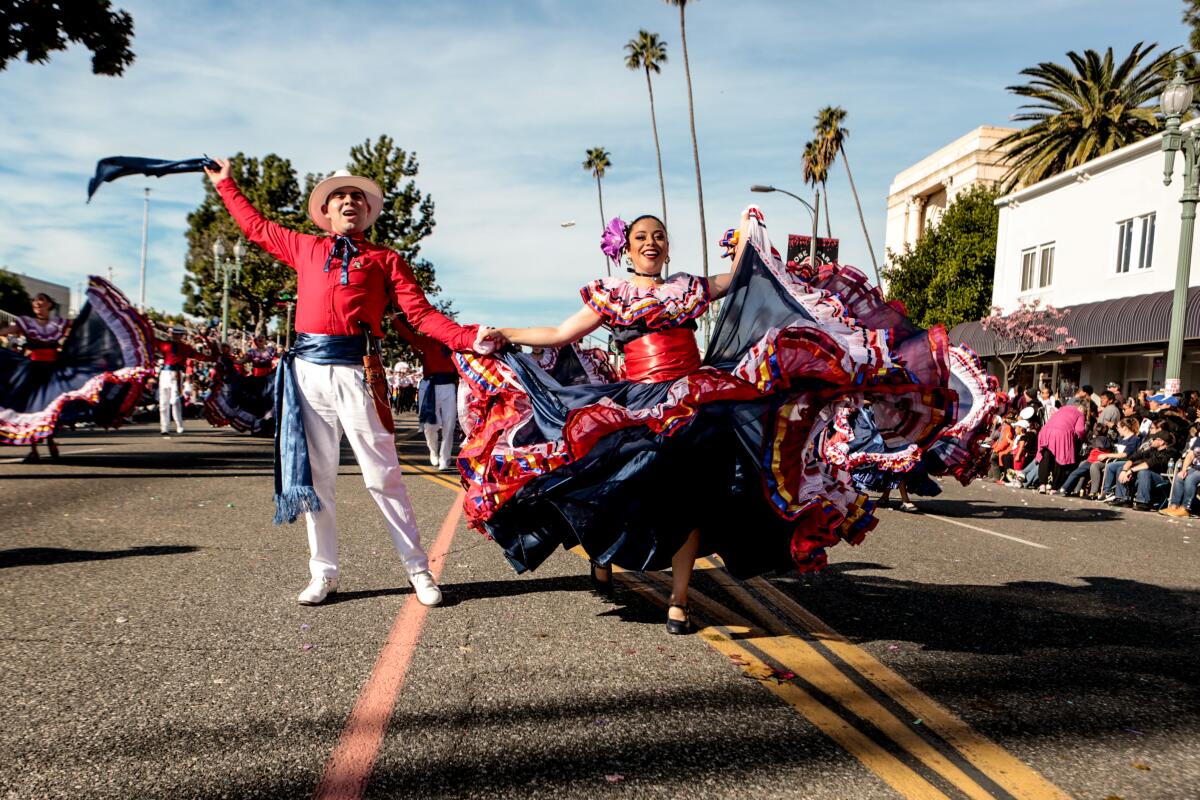
Rose Parade
Pasadena wouldn’t be the same without float-making volunteers, roaming tourists, the big game in the Rose Bowl, and the Rose Queen and her court waving as the parade rounds the corner of Colorado and Orange Grove boulevards.
Some people buy costly grandstand tickets. Some do their ogling in advance by visiting floats under construction in the days before the parade (an option closed to the public this year). Most others wake early and wait for hours to secure a free curbside spot along the 5.5-mile route before the parade starts at 8 a.m. Here’s what organizers advise.
If you sleep in, no worries. Parade organizers stage “Floatfest: A Rose Parade Showcase” on Jan. 1 and 2 at Sierra Madre and Washington boulevards, a showcase of about 45 Rose Parade floats that lets you get within a few feet of them (and inhale the fragrance!). Cost is $20 per person.
Pro tip: The 2022 Grand Marshal is actor-TV host Levar Burton. The 103rd Rose Queen is Nadia Chung, a senior at La Cañada High School.
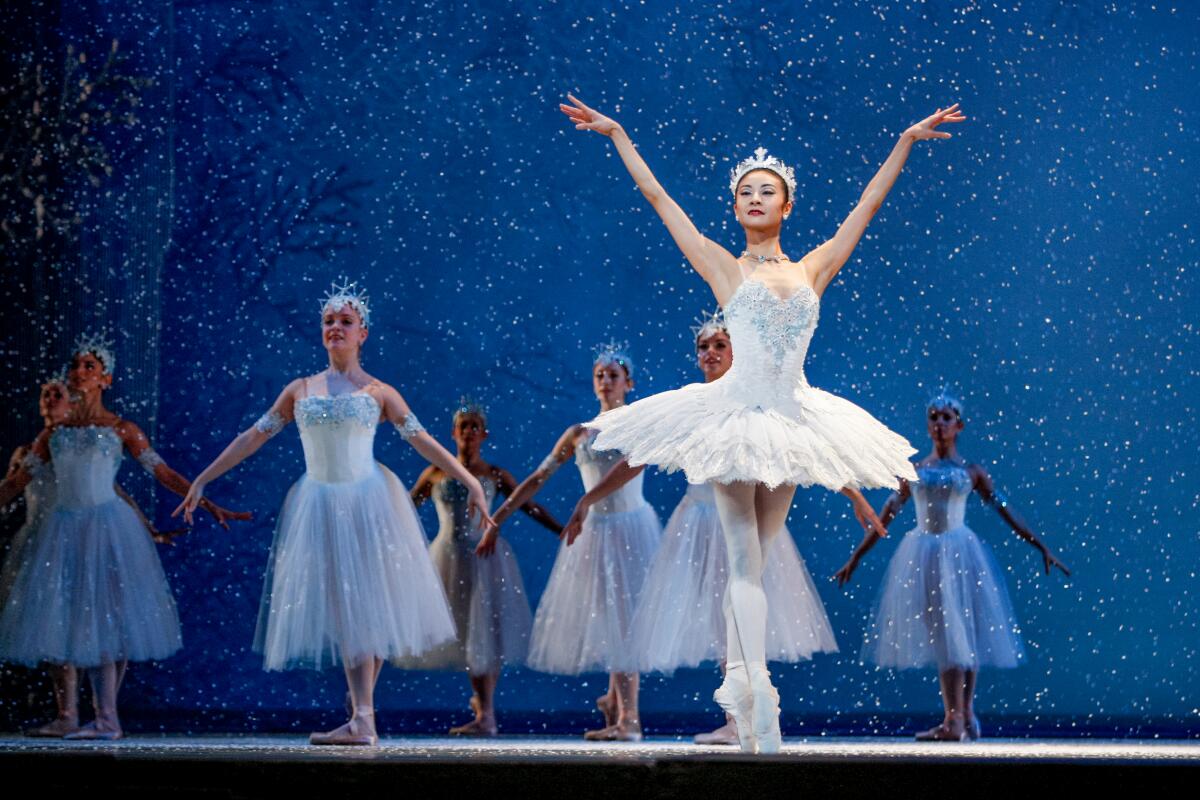
San Francisco War Memorial and Performing Arts Center
It’s these buildings’ insides, however, that make them special. Especially in colder months, when performing arts thrive. Besides operas, the 3,200-seat opera house hosts the San Francisco Ballet, which is doing “Nutcracker” Dec. 10-30, including 10 performances in the week before Christmas.
In Davies Hall, December brings San Francisco Symphony holiday programming, including Handel’s “Messiah,” a guest gig by Mariachi Sol de Mexico, and screenings of “Love Actually” and “Home Alone” with orchestral accompaniment.
Pro tip: If you get into the Veterans Building’s Herbst Theater, check out the walls, which feature eight enormous paintings celebrating earth, air, fire and water, painted in 1915 by celebrated landscape artist Frank Brangwyn.
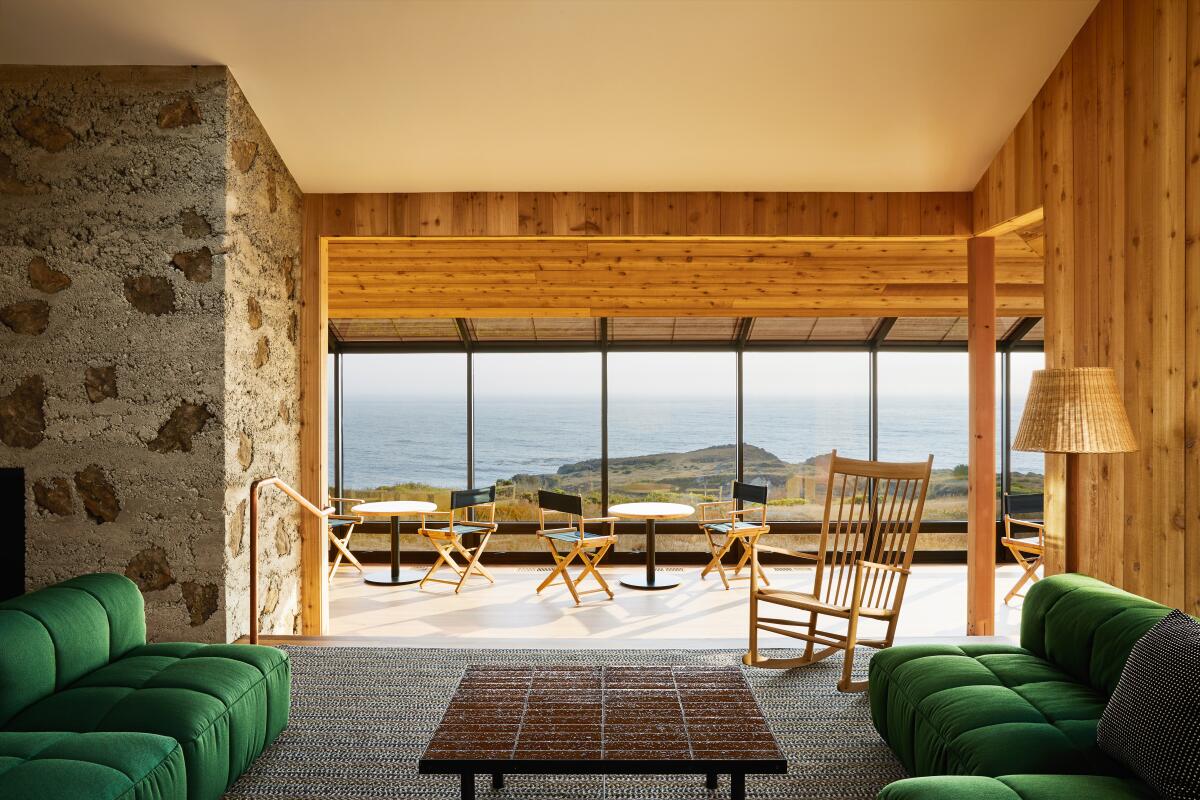
Sea Ranch
From its start in the 1960s, the development has tangled with some environmental groups. Many say frustration over Sea Ranch helped provoke the creation of the California Coastal Commission in 1972. Yet the project also has won design prizes from the American Institute of Architects.
Nobody denies that these handsome homes are in the middle of a beautiful place. It includes six publicly accessible trails, a links-style golf course and an iconic curvy chapel of stone, redwood and stained glass by artist-designer James Hubbell. Rental homes typically go for $250-$500 nightly, often with multiple-night minimums. All of Sea Ranch’s roads and most of its trails are private and intended for use only by owners, renters and their guests.
Pro tip: The Sea Ranch Lodge, a focal point for the community and people passing through, reopened its dining room (lunch and dinner), cafe (breakfast and lunch), bar and general store Oct. 1 after a closure and ownership change in late 2018. In spring 2023, management hopes to reopen the lodge’s 17 guest rooms.
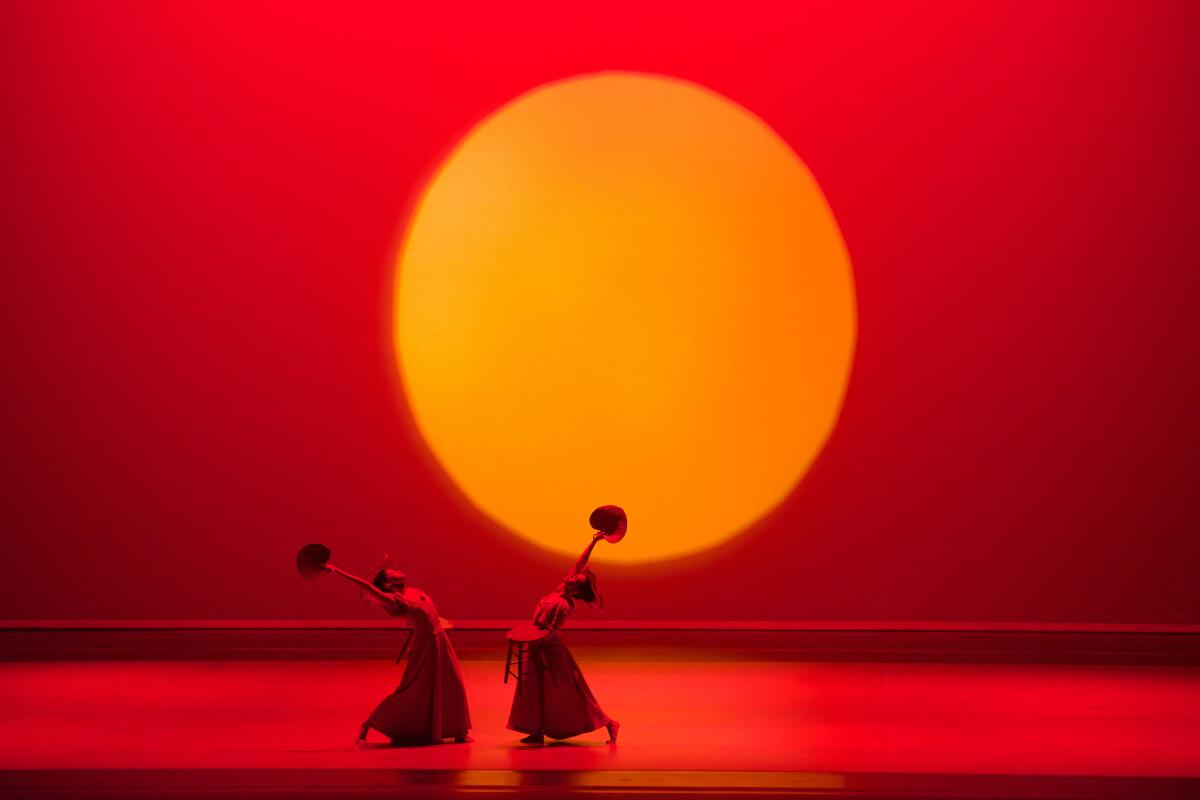
Segerstrom Center for the Arts
But this time you’re coming for culture. Just across Bristol Street from the mall, you’ll find Segerstrom Center for the Arts, whose several venues have holiday offerings, including “The Nutcracker” (American Ballet Theatre) and Christmas-themed shows by Mariachi Los Camperos and Johnny Mathis (he’s 86). Traveling productions of “My Fair Lady” and “Wicked” are due in early 2022 at the campus’s largest venue, 3,000-seat Segerstrom Hall.
Meanwhile, South Coast Repertory Theater, also on campus and back to live shows, is offering a full December of “A Christmas Carol” along with five other shows in its 2021-22 season.
Pro tip: If you do get over to South Coast Plaza, you soon truly can have breakfast at Tiffany‘s: The jewelry store says its Blue Box Cafe, the brand’s second cafe in North America, will open for full service in the spring. Also, the Orange County Museum of Art, formerly of Newport Beach, is scheduled to open its long-awaited new main building at Segerstrom Center in fall 2022. (And it will be free.)
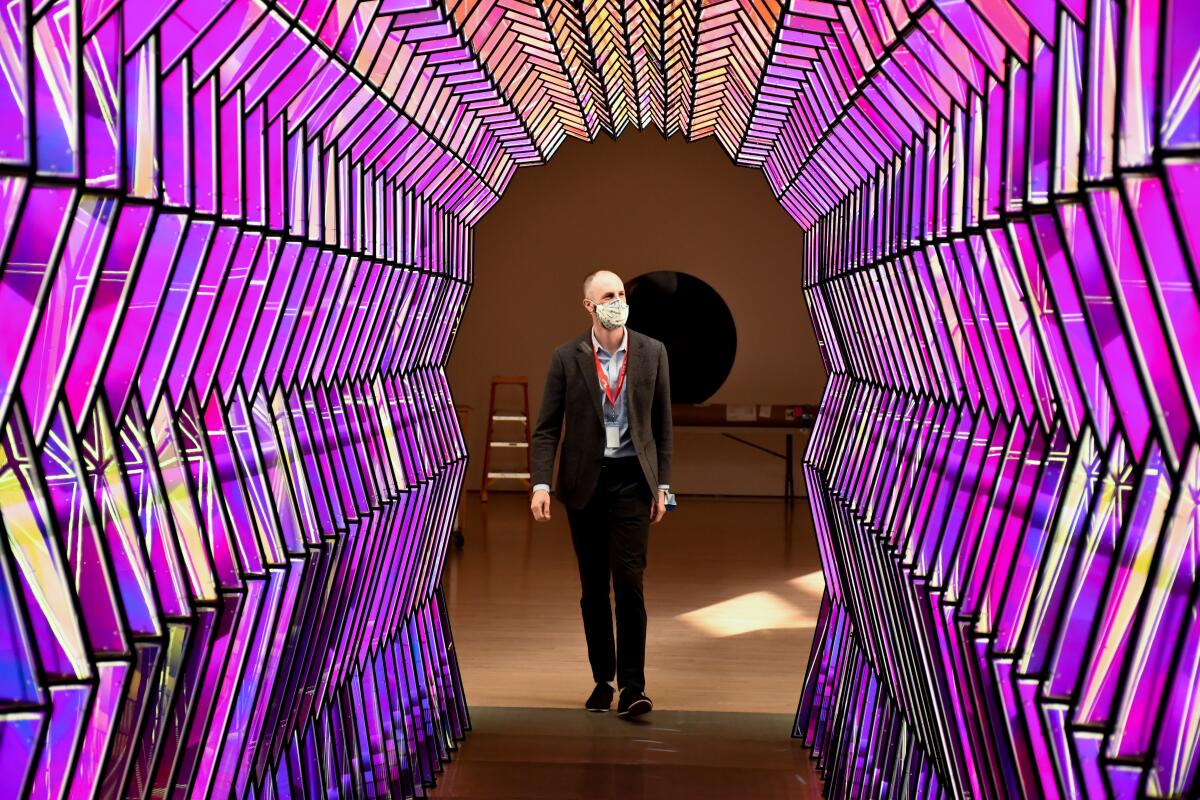
SFMOMA
Once inside, tread the Oculus Bridge catwalk, which hangs four floors above the museum lobby. Next to it stands artist Olafur Eliasson’s ”One-Way Colour Tunnel,” which sparkles like purple ice. On the free area of the ground floor, you’ll see Diego Rivera’s epic 1940 mural “Pan American Unity,” on loan from City College of San Francisco through at least the start of 2023.
And if the museum seems bigger than you remember, it is. It dramatically expanded in 2016, tripling its exhibition space, boosting its emphasis on photography, adding a terrace and bedecking its restrooms in colors so bold that you probably ought to nip into one, whether you need to or not.
Pro tip: Just around the corner from SFMOMA on Mission Street stands the Museum of the African Diaspora. Through Feb. 27, exhibitions include Ghanaian artist Amoako Boafo‘s “Soul of Black Folks,” featuring canvases that combine delicate brushwork with finger painting.
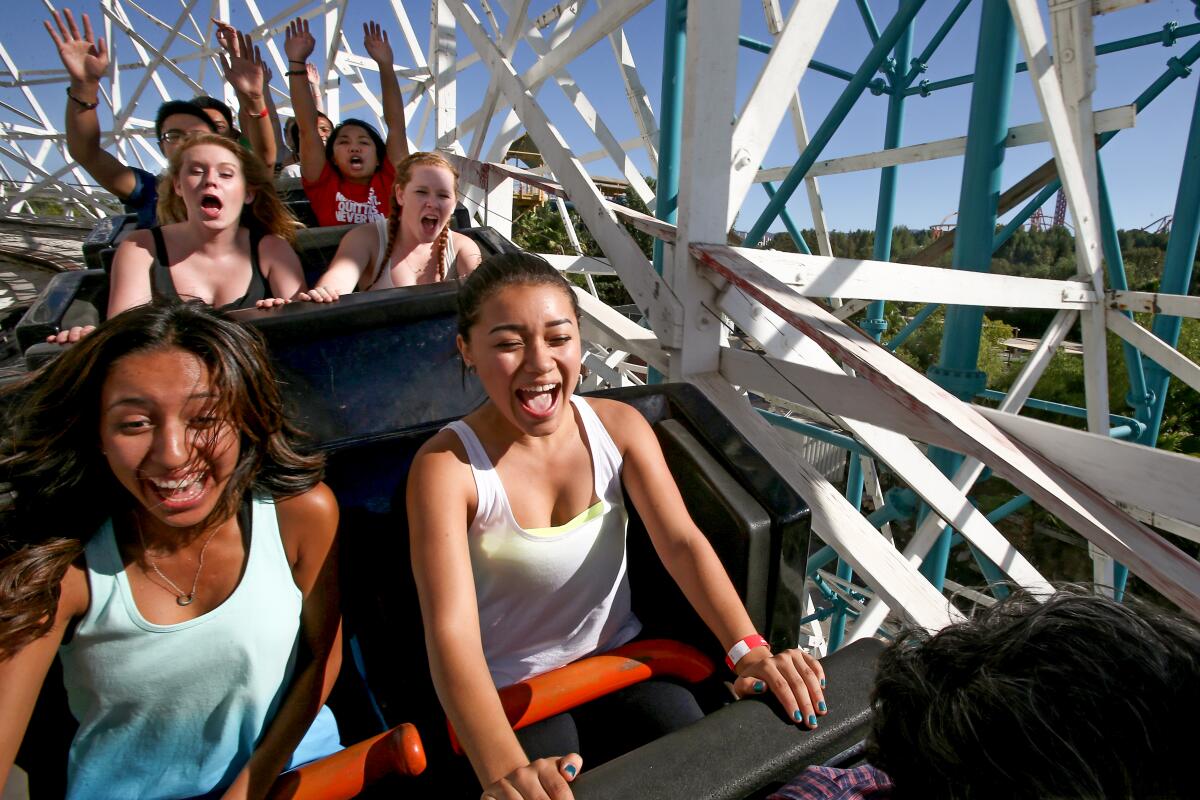
Six Flags Magic Mountain
Opened in 1971, Six Flags Magic Mountain covers 262 acres. It is offering “Holiday in the Park” programming through Jan. 2. One-day tickets start at $45.
Pro tip: In summer 2022, the park says, it will open its 20th coaster: Wonder Woman Flight of Courage, “the tallest and longest single-rail coaster on the planet.” Thirteen stories high. Speeds of up to 58 mph.
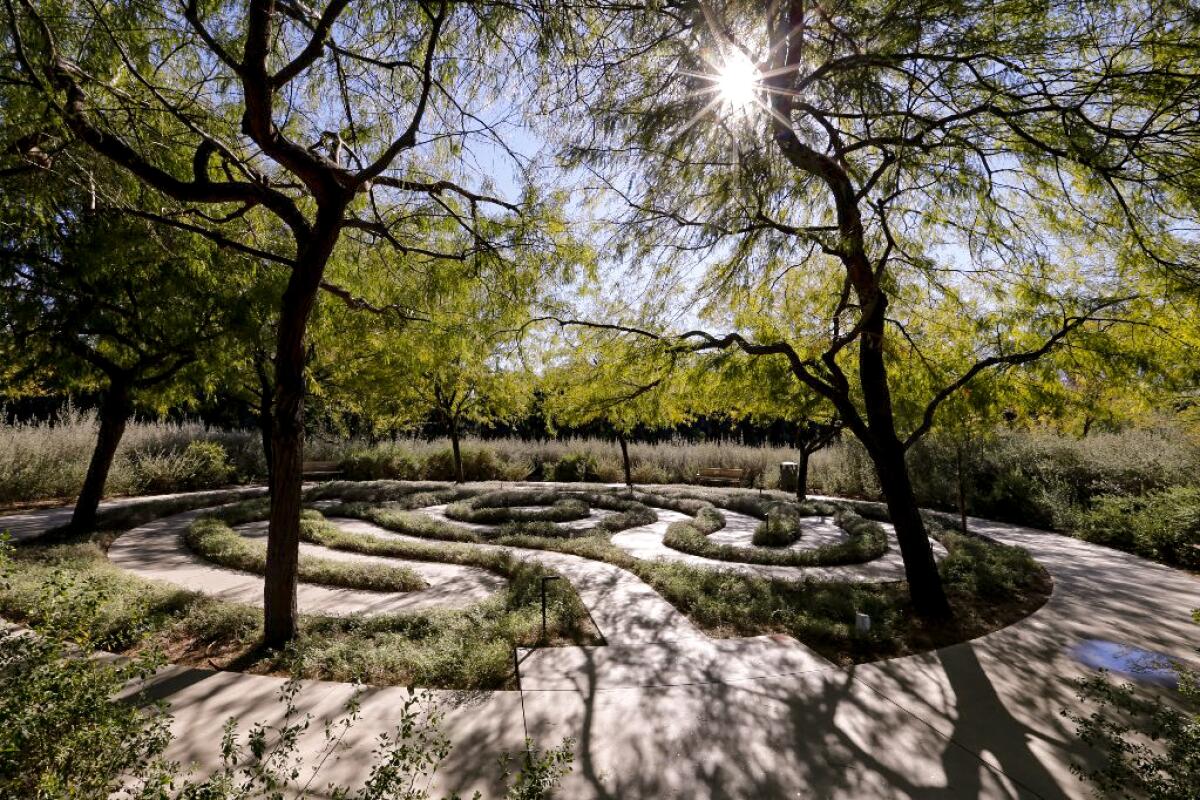
Sunnylands
Sunnylands is a sleek, vast estate that I think of as the White House of Midcentury Modernism. It was the winter playground of Walter and Leonore Annenberg, whose holdings included the once vastly powerful publication TV Guide. Walter Annenberg served as an ambassador for former President Richard Nixon. Leonore Annenberg oversaw protocol for former President Ronald Reagan. They commissioned architect A. Quincy Jones and built the estate (200 acres, 11 lakes) in 1966.
In 2012, after their deaths, the Annenberg Foundation opened the 15-acre Sunnylands center and its succulent gardens, including a gift shop and reflecting pools, to free public visits. You can tour the rest of the estate too, but you’ll need a timed ticket. Reservations go fast, and the property closes in summer months. A $49 house tour (90 minutes covering 25,000 square feet) is one of four available. Most are offered November through April.
Grab lunch from the cafe, sit back on the patio and imagine you’re Frank Sinatra on the brink of his fourth marriage. (Yes, that happened here in 1976. The bride was Barbara Marx, Zeppo’s ex.)
Pro tip: For more fun with glass walls and swooping roofs, try the area during Modernism Week, the desert’s annual salute to midcentury design (Feb. 17-27). But book way ahead.
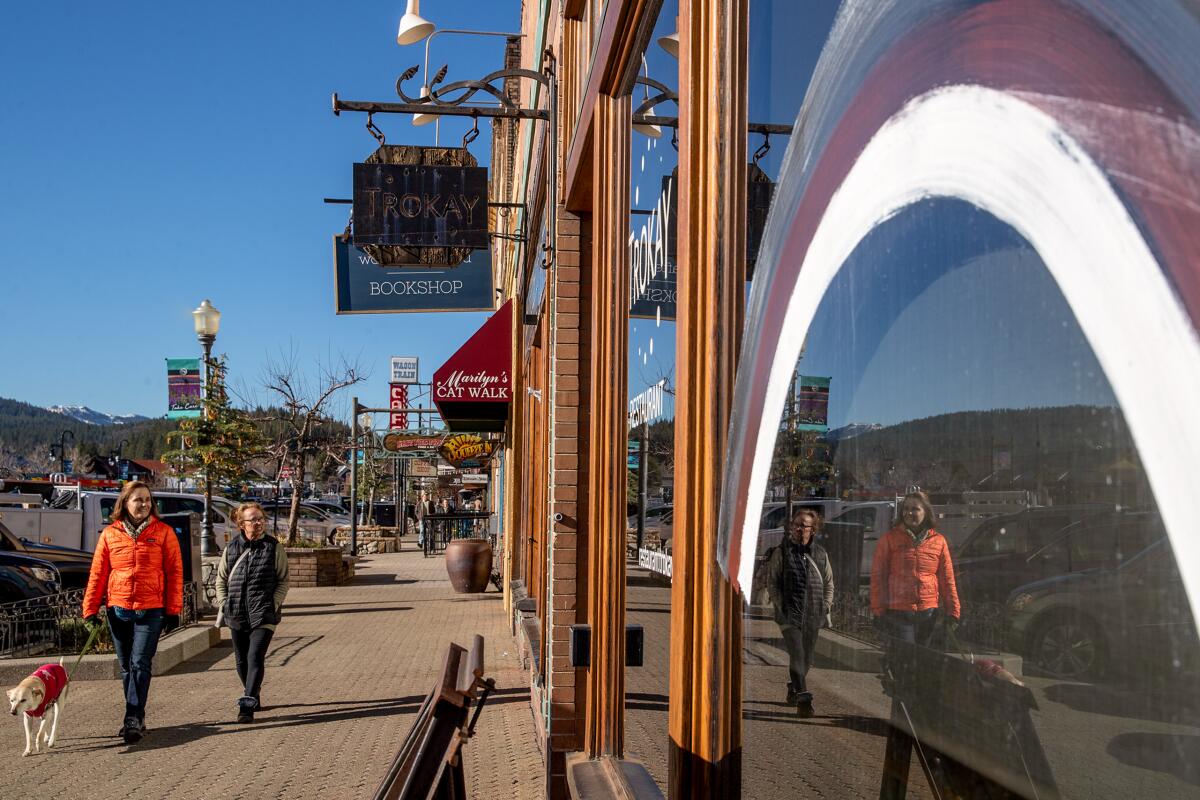
Truckee
You can’t blame them. Truckee, 12 miles northwest of Lake Tahoe, about 5,800 feet above sea level and handy to several ski resorts, is a fine place to take a day off from skiing (in winter) or from lake sports in (summer) to hike along the Truckee River (which runs through town) or patrol the sidewalks of Donner Pass Road, checking out restaurants, bars, boutiques, galleries and a pretty good bookstore (Word After Word).
Just three miles west of town, you’ll find Donner Lake and Donner Memorial State Park, where you can hike, camp or picnic, if you don’t mind being reminded of the Donner party’s disastrous winter here in 1846-47.
If you arrive with kids, it may be hard to resist a burger and a shake in Jax at the Tracks, a reconditioned 1948 diner that counts Guy Fieri among its past customers. If you’re spending the night, the Cedar House Sport Hotel is a remarkable piece of architecture — part cozy cabin, part industrial chic — that’s also home to an admirable restaurant (Stella, whose menu is part Mexican, part Middle Eastern).
Pro tip: I never knew, until visiting, of another 19th century disaster here. In the 1870s and ’80s, after hundreds of Chinese railroad workers put down roots in town, members of a local Caucasian League led a community campaign of shootings, fires and boycotts to chase the Chinese away. From a Chinatown that once stretched for blocks, one building (built of brick) remains.
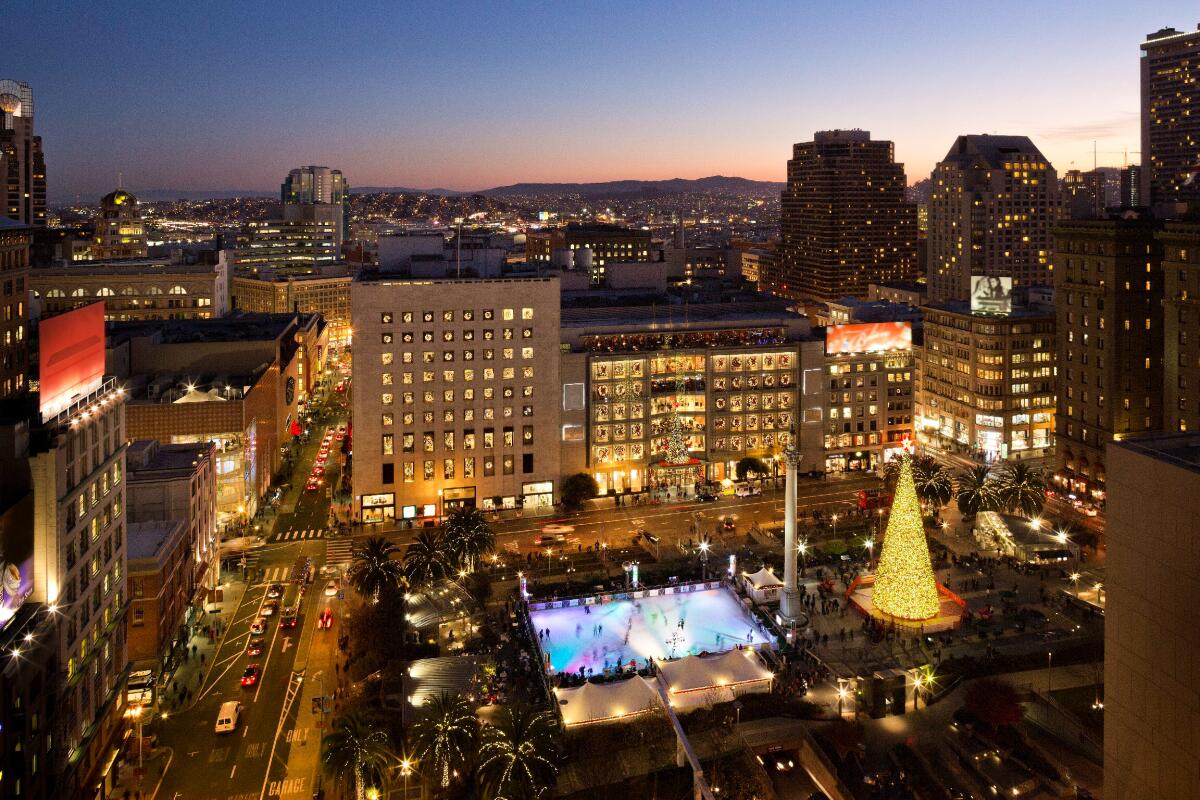
Union Square
In coming weeks, it likely will perk up as more visitors appear. Cable cars pass on Powell Street, and the square is surrounded by hotels and brand-name shops, including Macy’s (whose holiday displays draw crowds), Apple, Dyson, Gucci, Neiman Marcus and Swarovski.
This winter, the skating rink will open daily through Jan. 17. The Macy’s Union Square Great Tree will stand and glitter through Jan. 2.
Pro tip: The Sir Francis Drake Hotel, a fixture on Powell for decades, has been closed since COVID-19 hit. The nearby, more basic Hotel Stratford has reopened after a major upgrade.
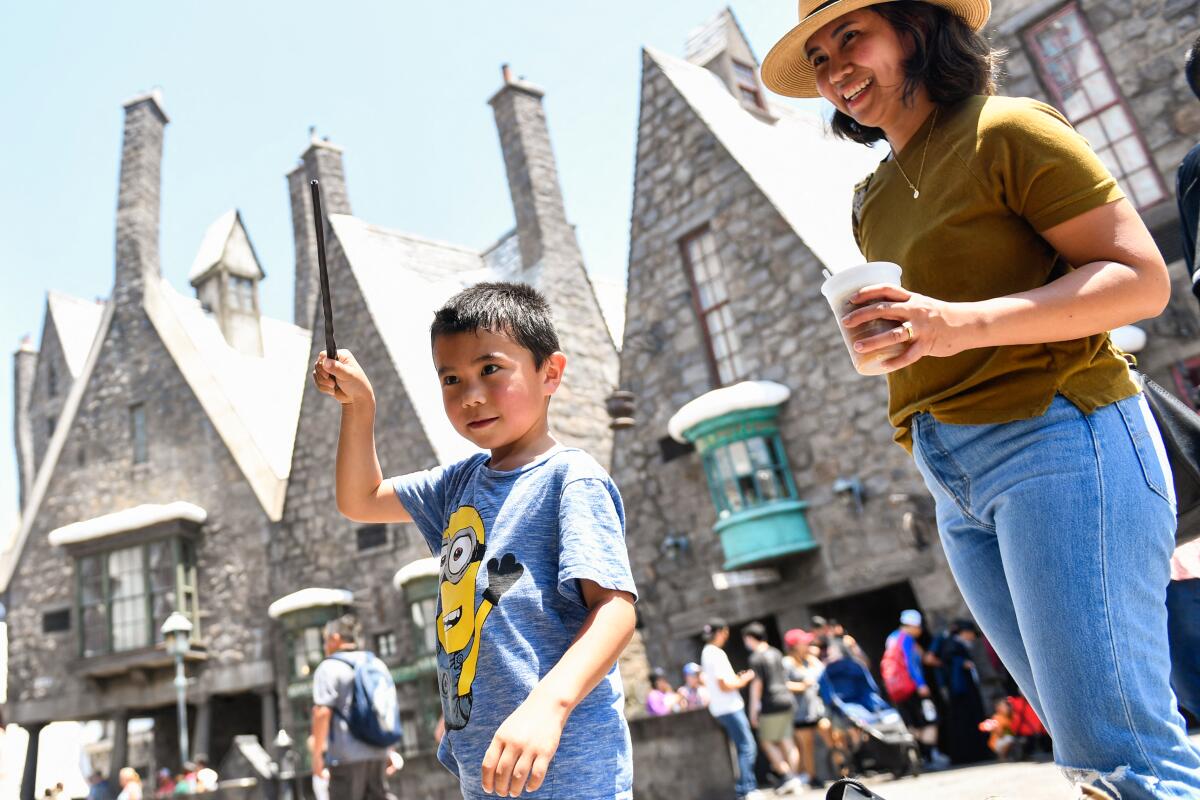
Universal Studios Hollywood
Universal Studios, which started offering tram tours in 1964, now rivals the Disney parks with legions of visitors and locations around the world. Attractions here draw from the “Harry Potter,” “Jurassic Park” and “Transformers” franchises. The studio tour includes elements from “Fast & Furious” and “King Kong,” and let’s not forget the house from “Psycho” and the shark from “Jaws.” Universal CityWalk with three blocks of restaurants, shops and theaters, is next door.
Pro tip: If you want to see showbiz nuts and bolts without theme-park folderol, investigate the tours offered by Warner Bros. in Burbank (they have a “Friends” boutique and cafe). Pandemic safety measures have forced suspension of tours at Paramount and Sony.
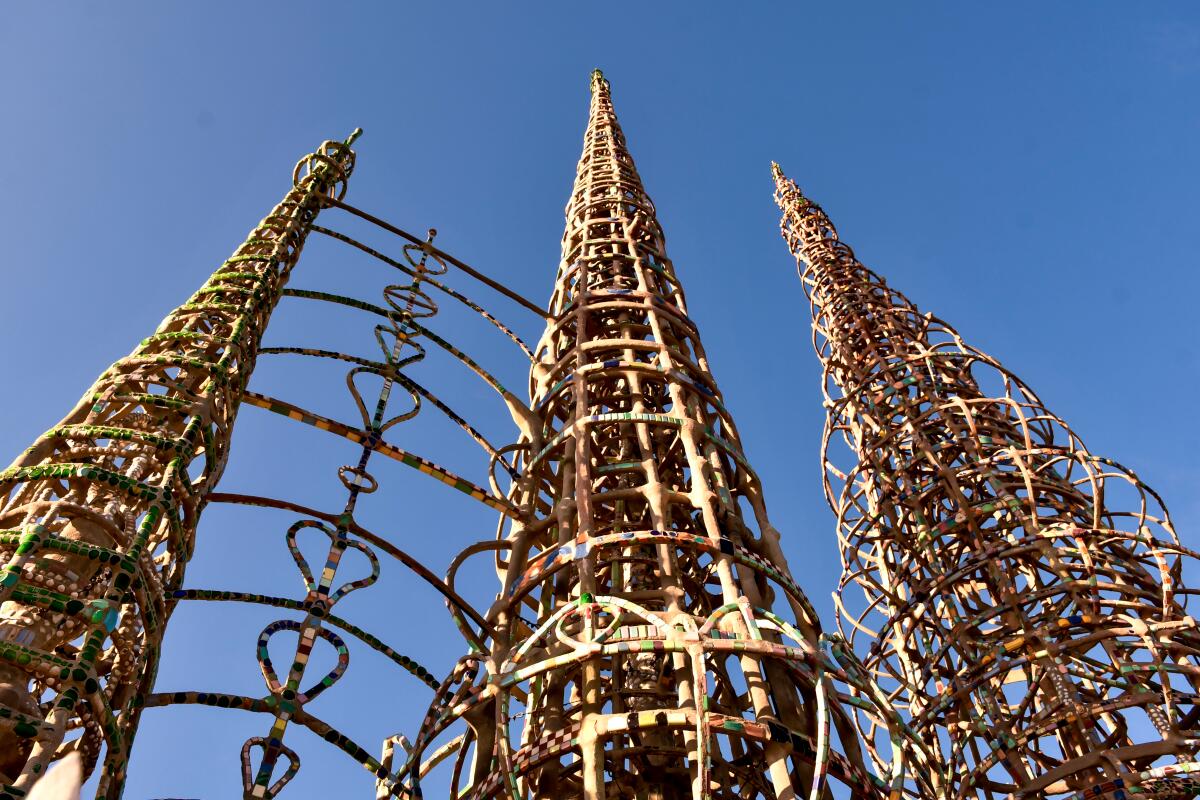
Watts Towers
Sabato (Simon) Rodia, an immigrant from Italy, started this backyard project in 1921 and spent 33 years putting up Watts Towers, using rebar, concrete, cast-off tiles, bottle caps and bits of colored glass (especially blue Phillips’ Milk of Magnesia bottles).
He walked away in 1954 and died in 1965. Yet his towers survive (despite recurring neglect and incompetence by public agencies), and they have inspired many local children to pursue creative careers (including celebrated assemblage artist Betye Saar, jazz great Charles Mingus and rapper-philanthropist Nipsey Hussle). It’s now protected as a state historic park and neighbored by a community arts center.
The area inside the triangular property’s walls has been closed for restoration since 2017, but a staffer said the towers were due to reopen in November 2022. Either wary, you can see plenty from outside the fence.
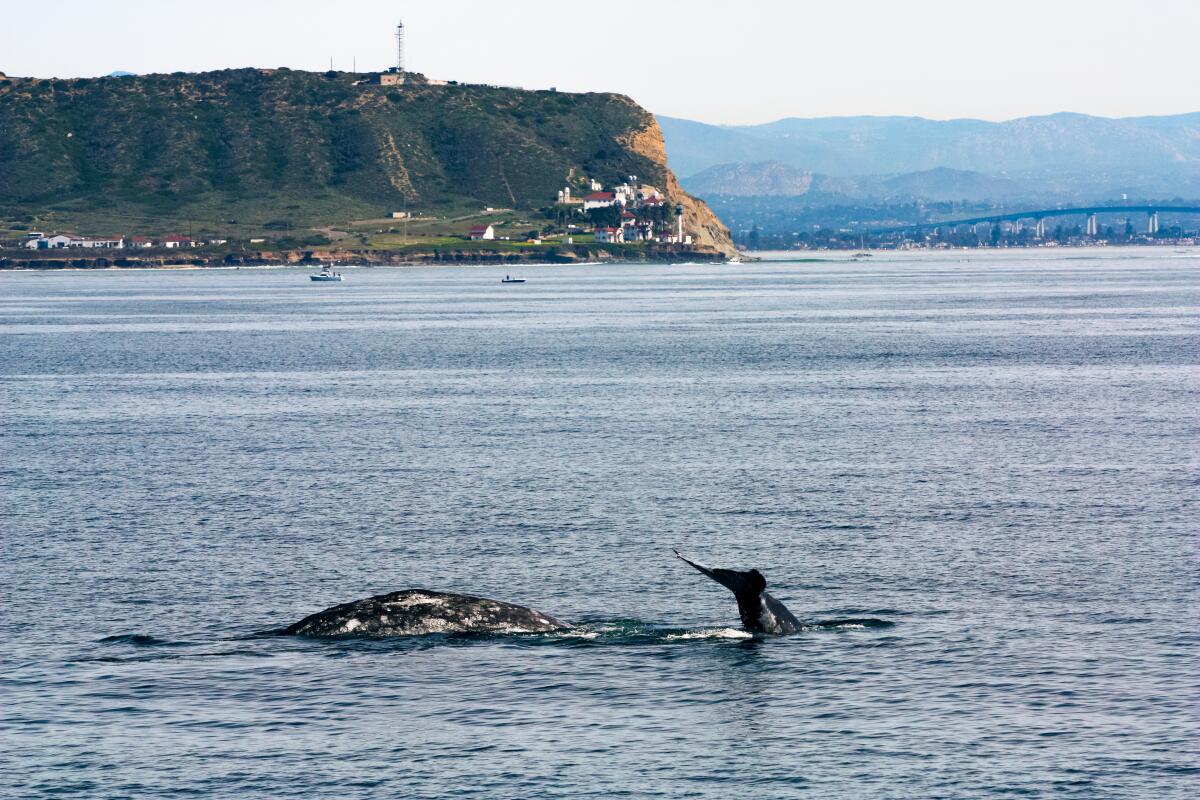
Whale-watching from San Diego
On any of those boats, you should hear plenty about the wonders of Eschrichtius robustus (the gray whale), which gets up to 49 feet long, often migrating 10,000 miles (round trip) in a year.
Meanwhile, you may come across pods of dolphins — sometimes hundreds, leaping in the surf. Several dolphin species are common in these waters.
Pro tip: San Diego also has a few strong spots for whale watching from land, especially Torrey Pines State Natural Reserve in La Jolla and Cabrillo National Monument on Point Loma. If you don’t get around to chasing whales this winter, blue whales and fin whales swim through the same coastal waters May through November, and, as San Diego Whale Watch likes to remind people, humpback and minke whales are possible year-round.
Sign up for The Wild
We’ll help you find the best places to hike, bike and run, as well as the perfect silent spots for meditation and yoga.
You may occasionally receive promotional content from the Los Angeles Times.
